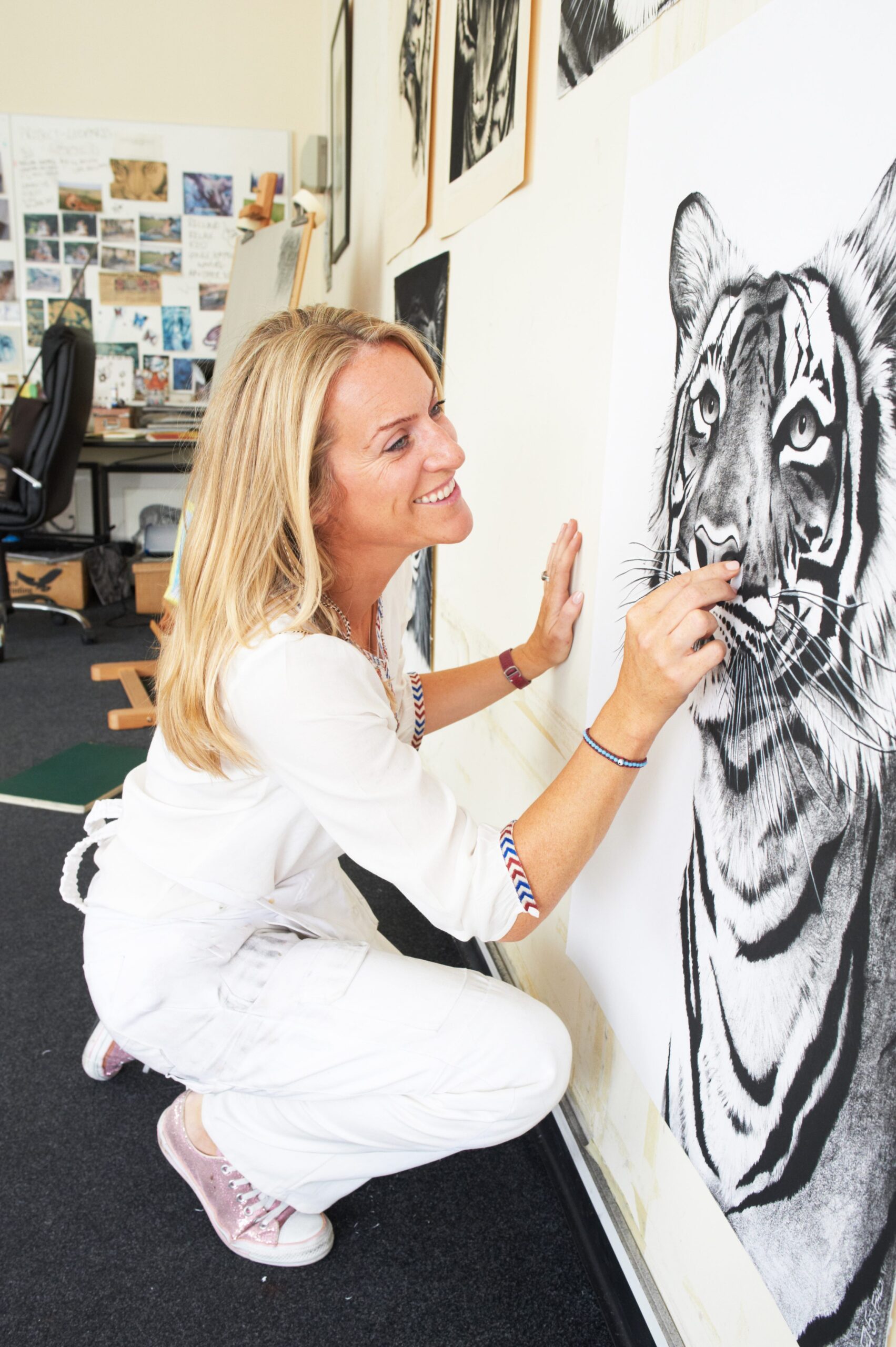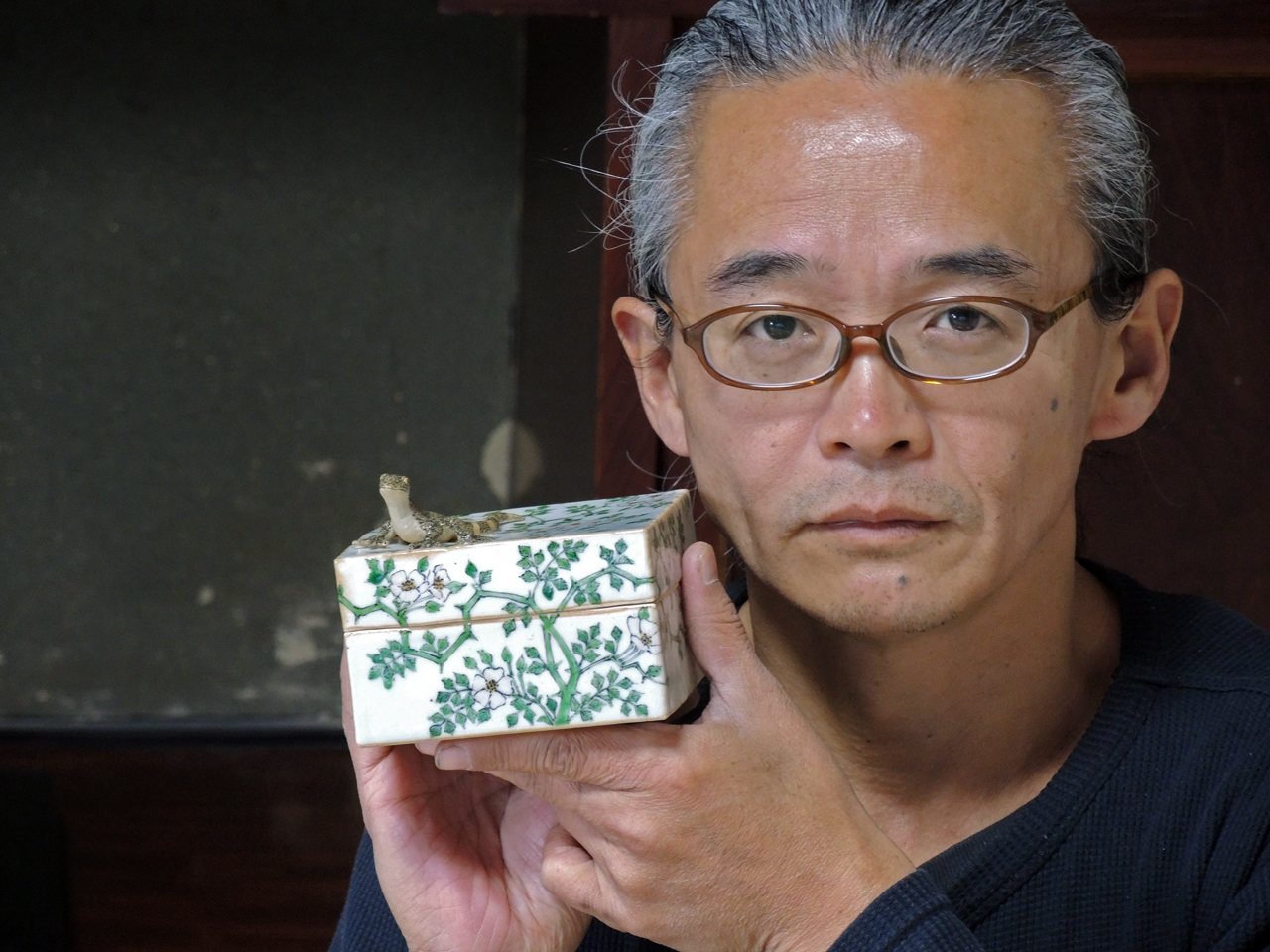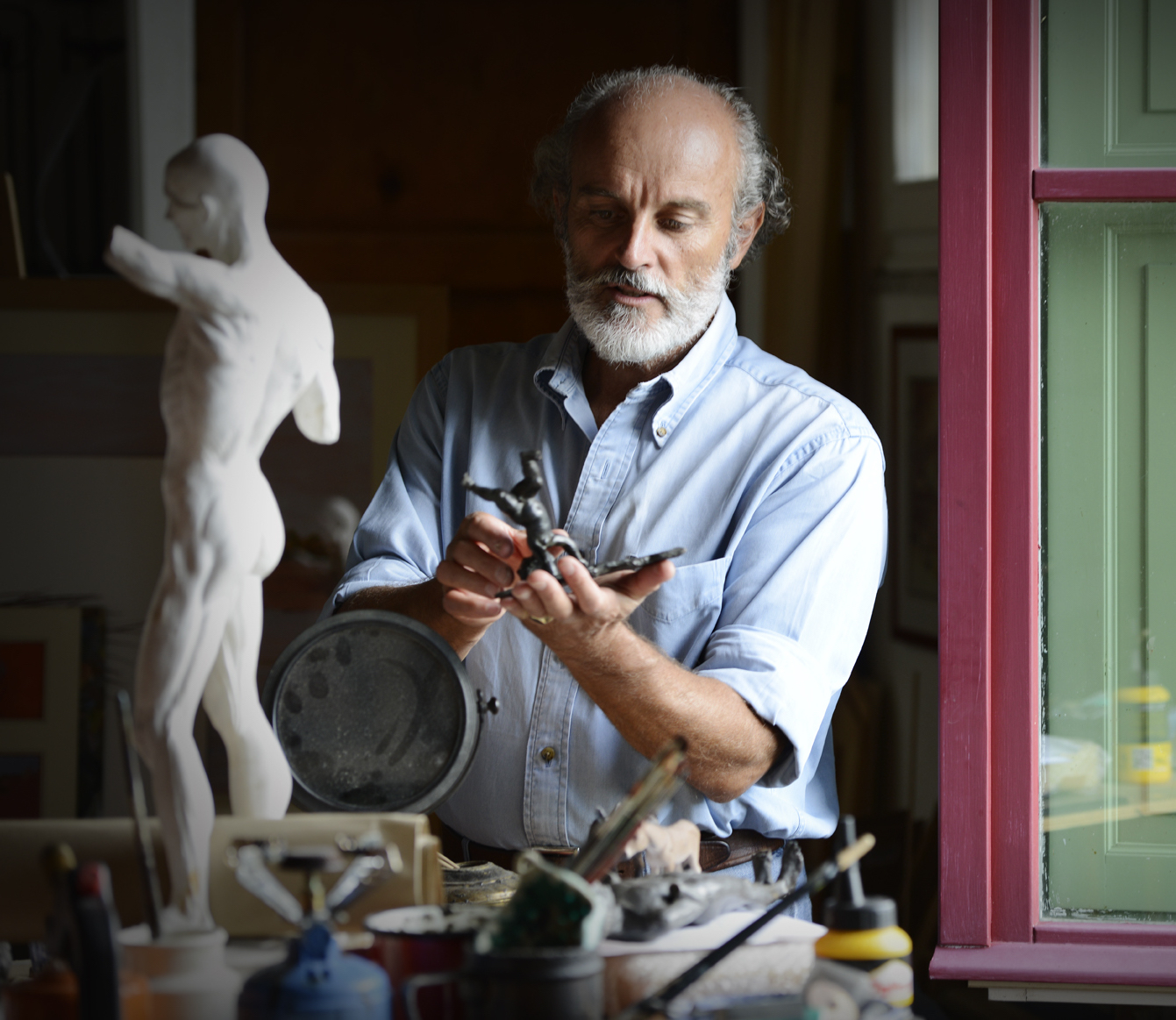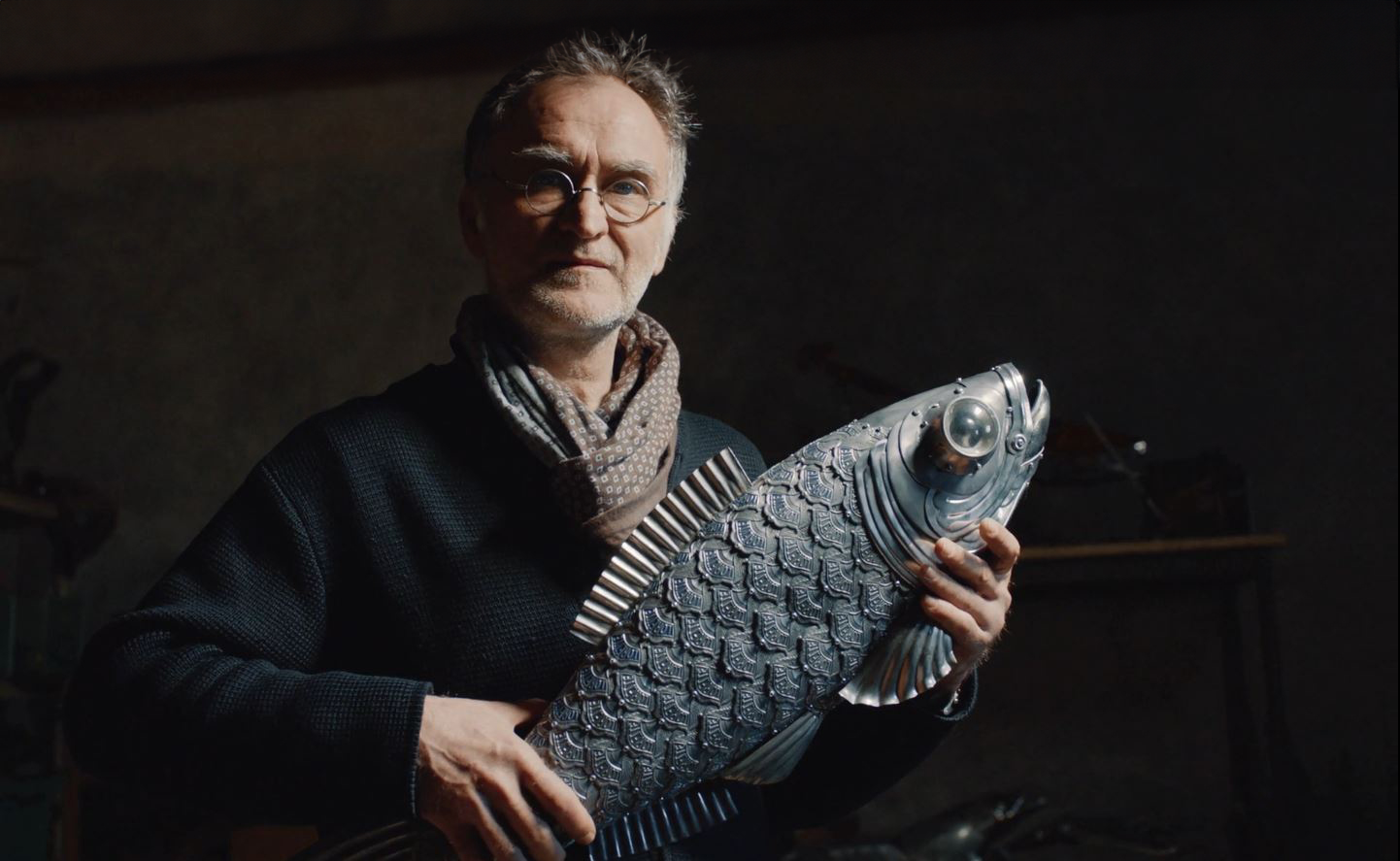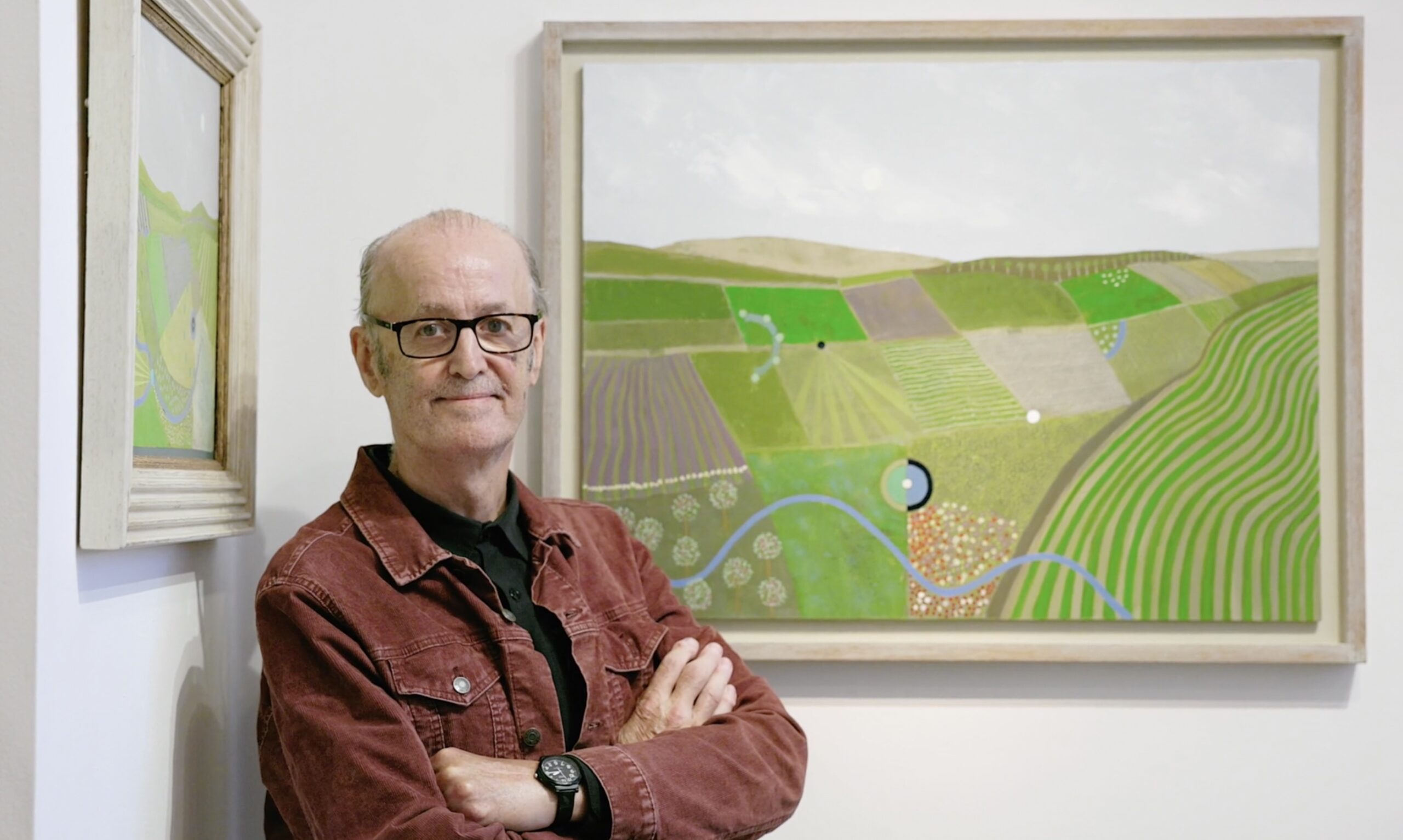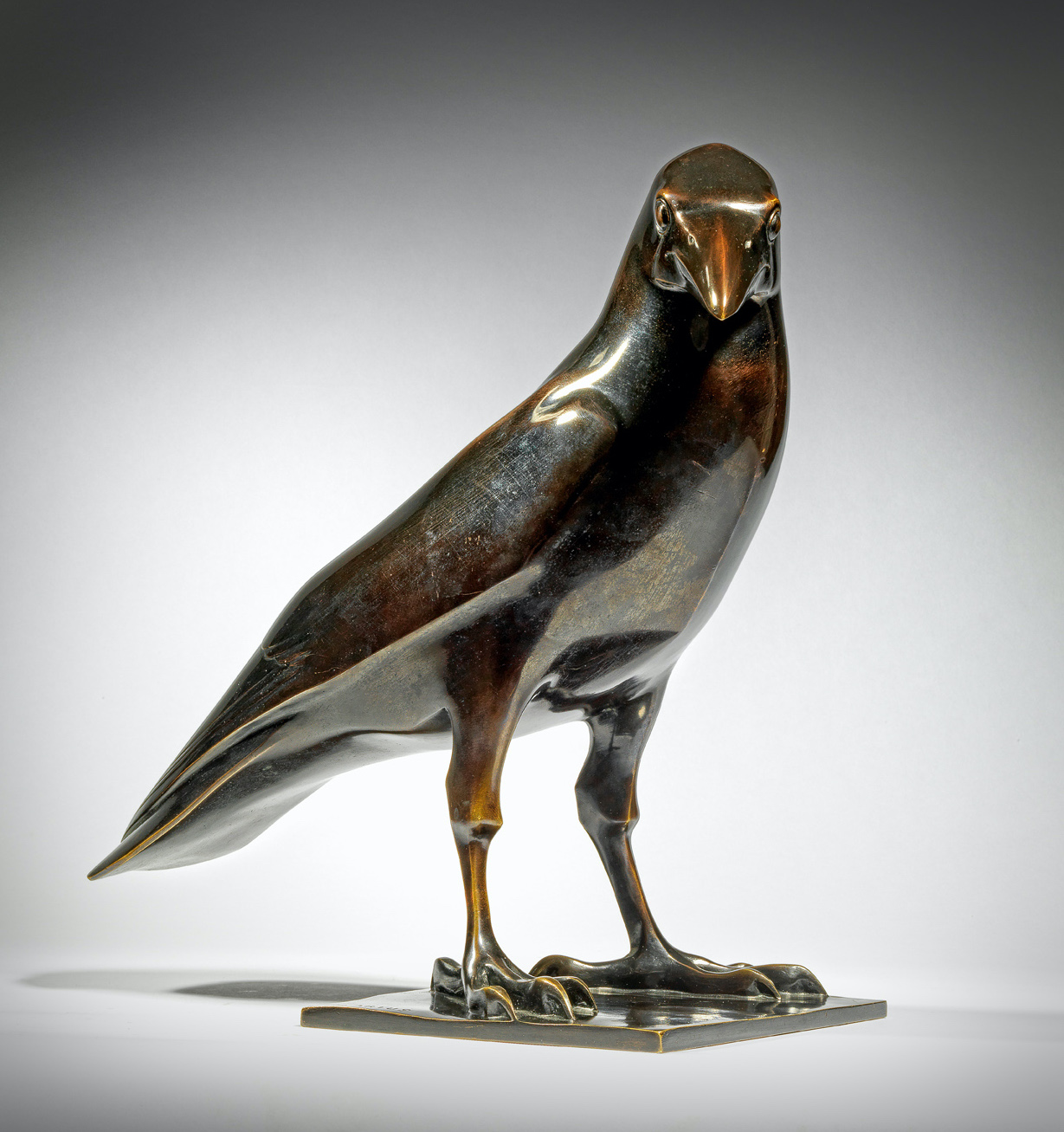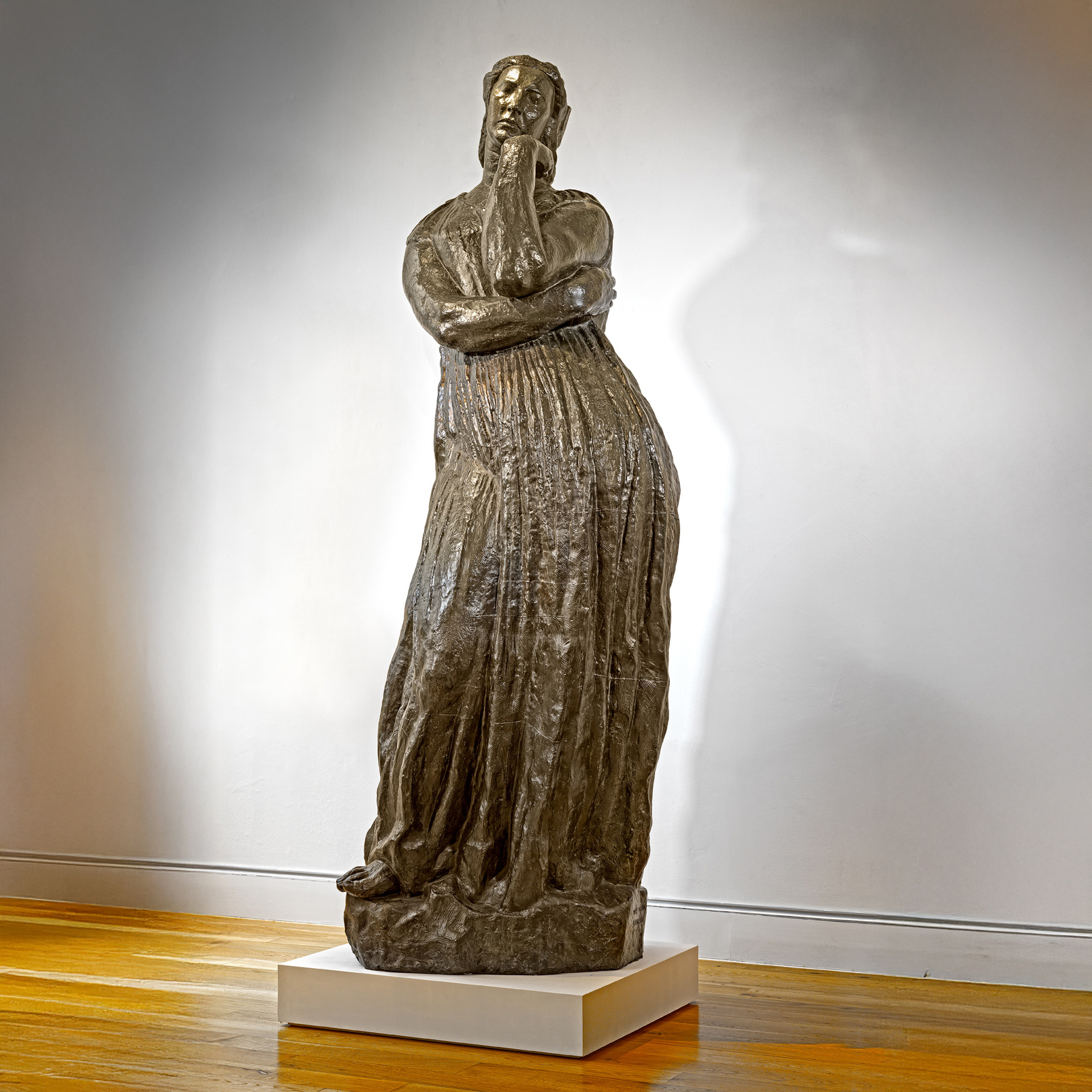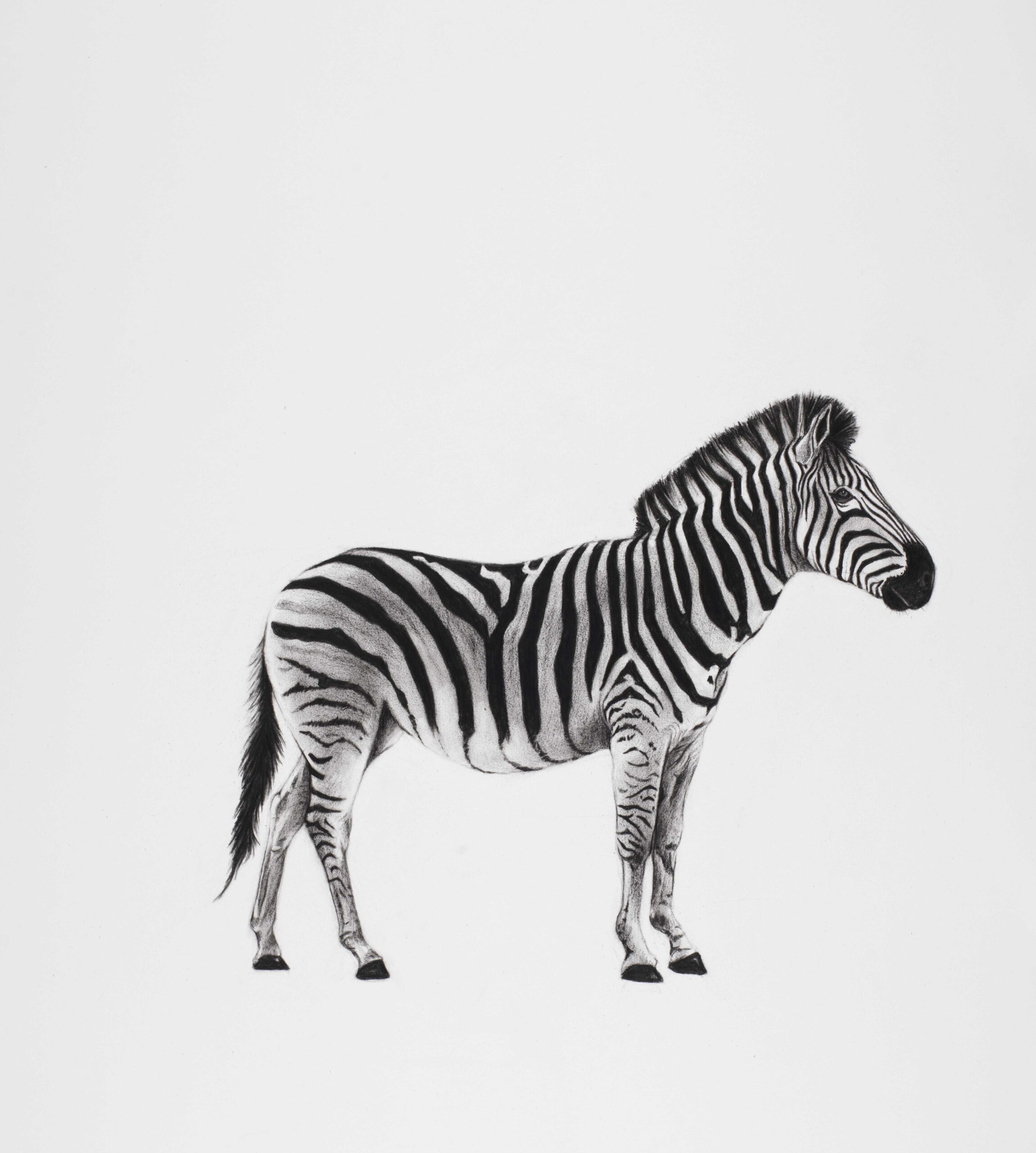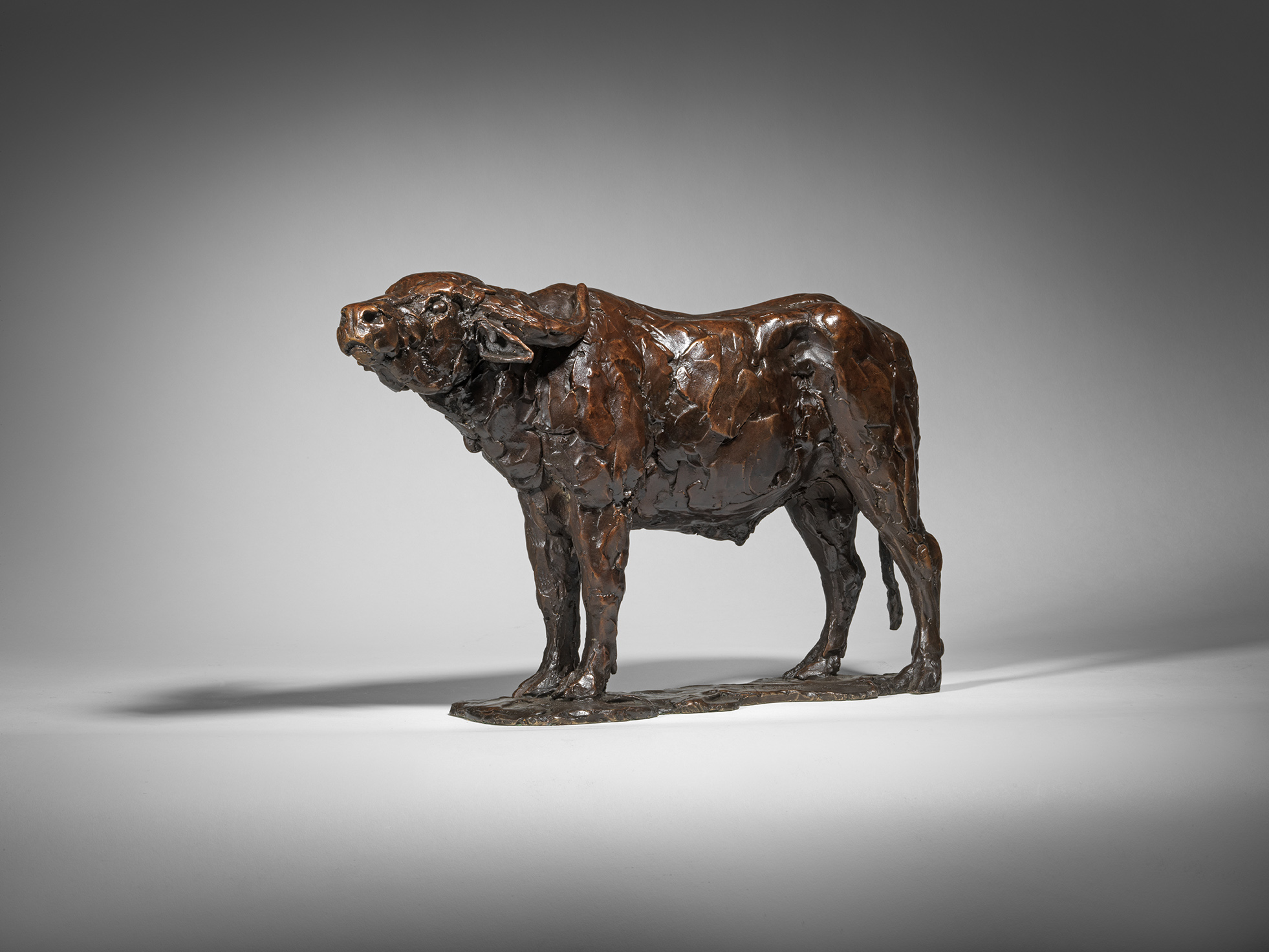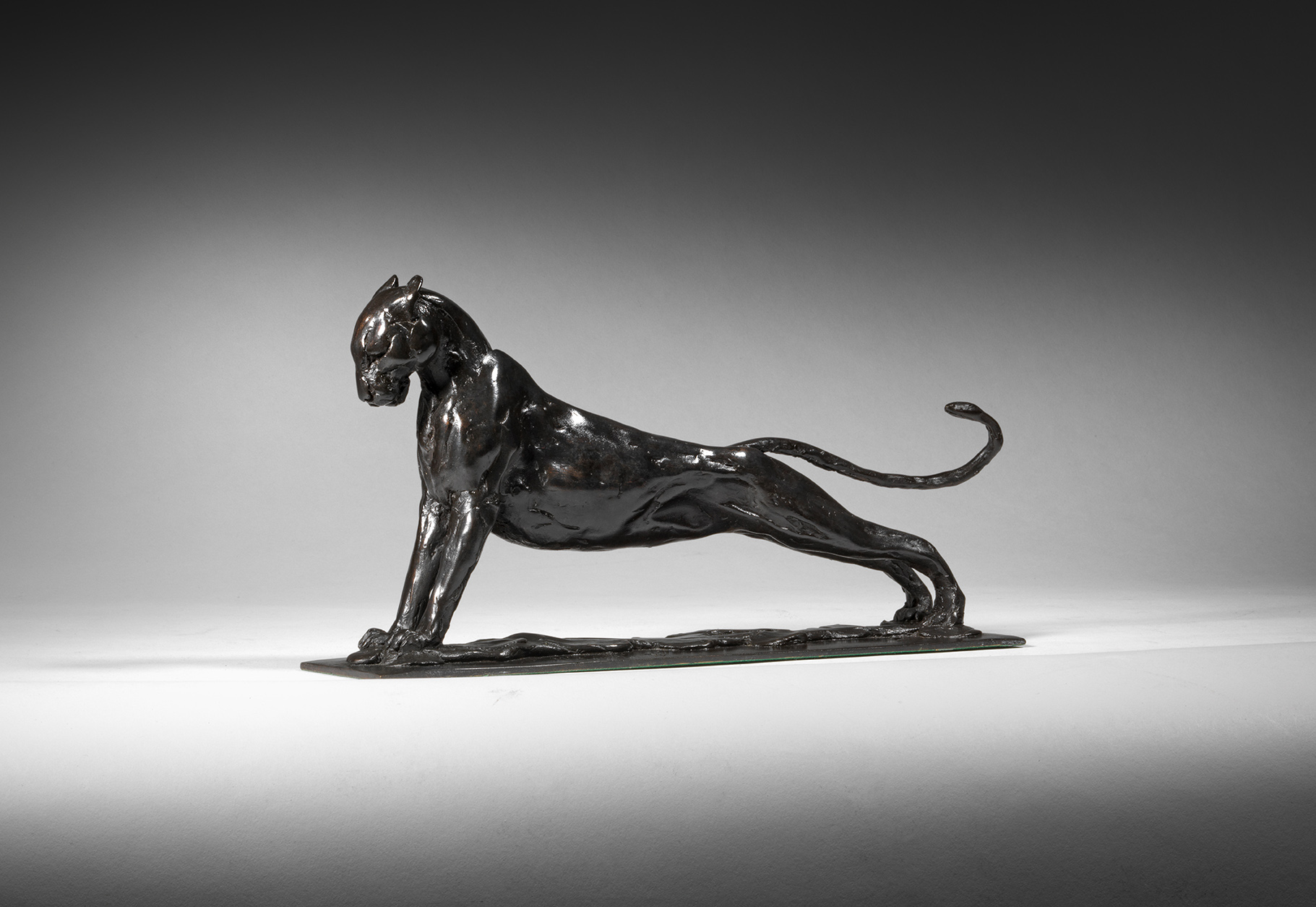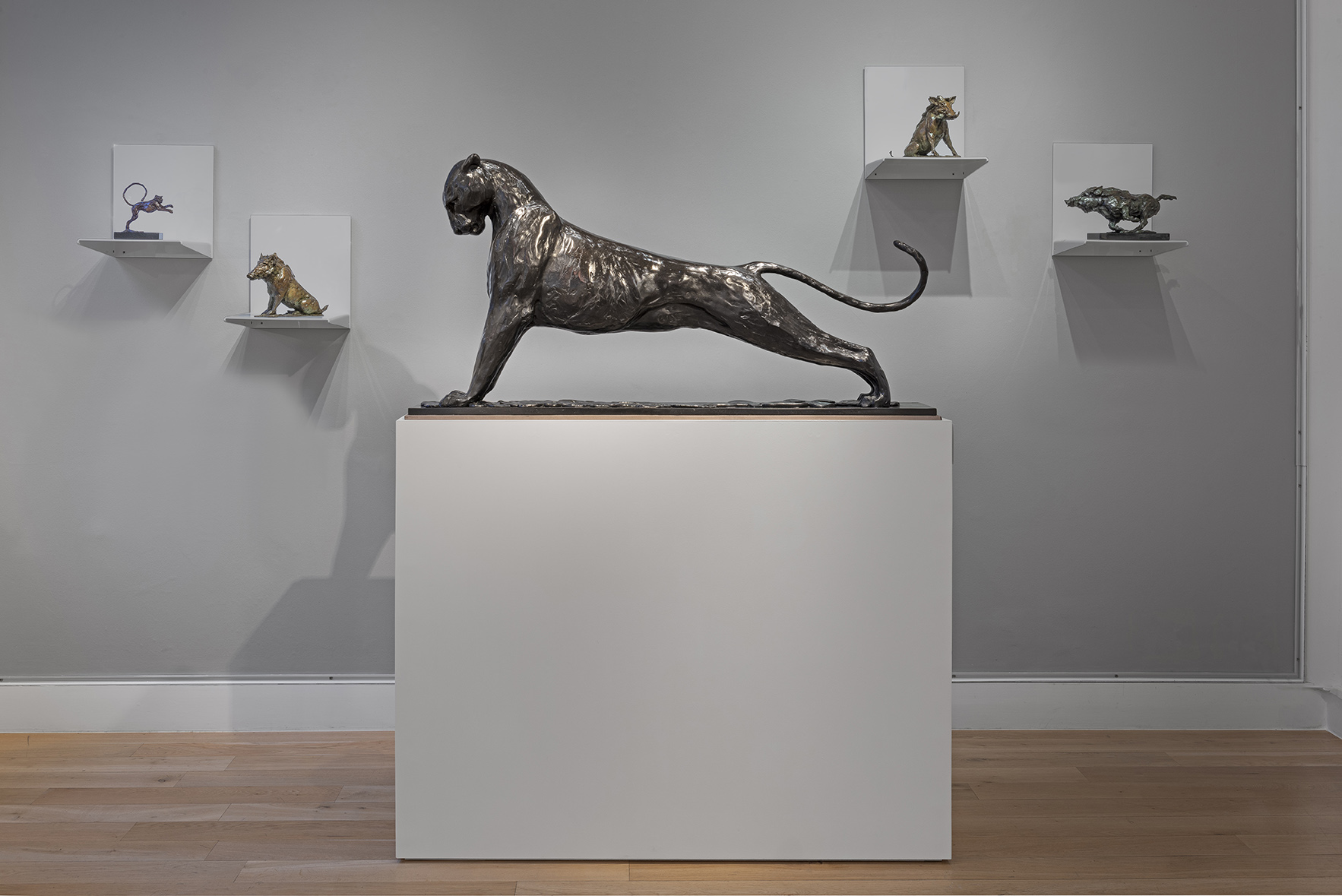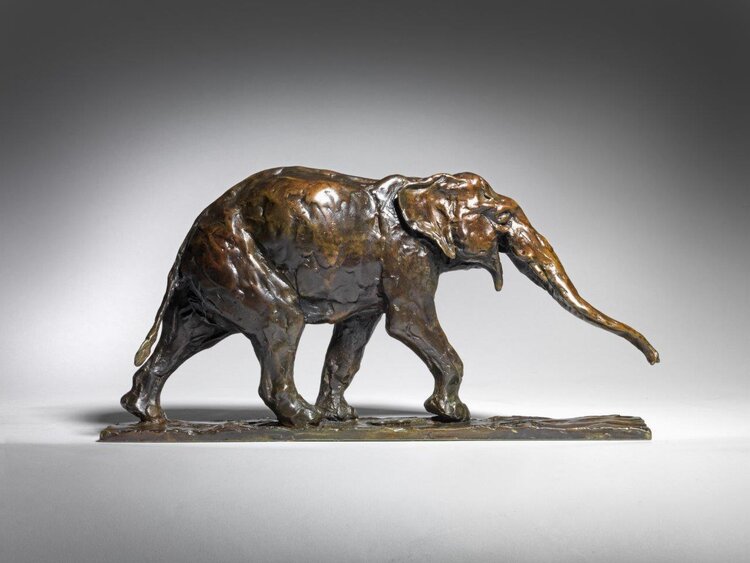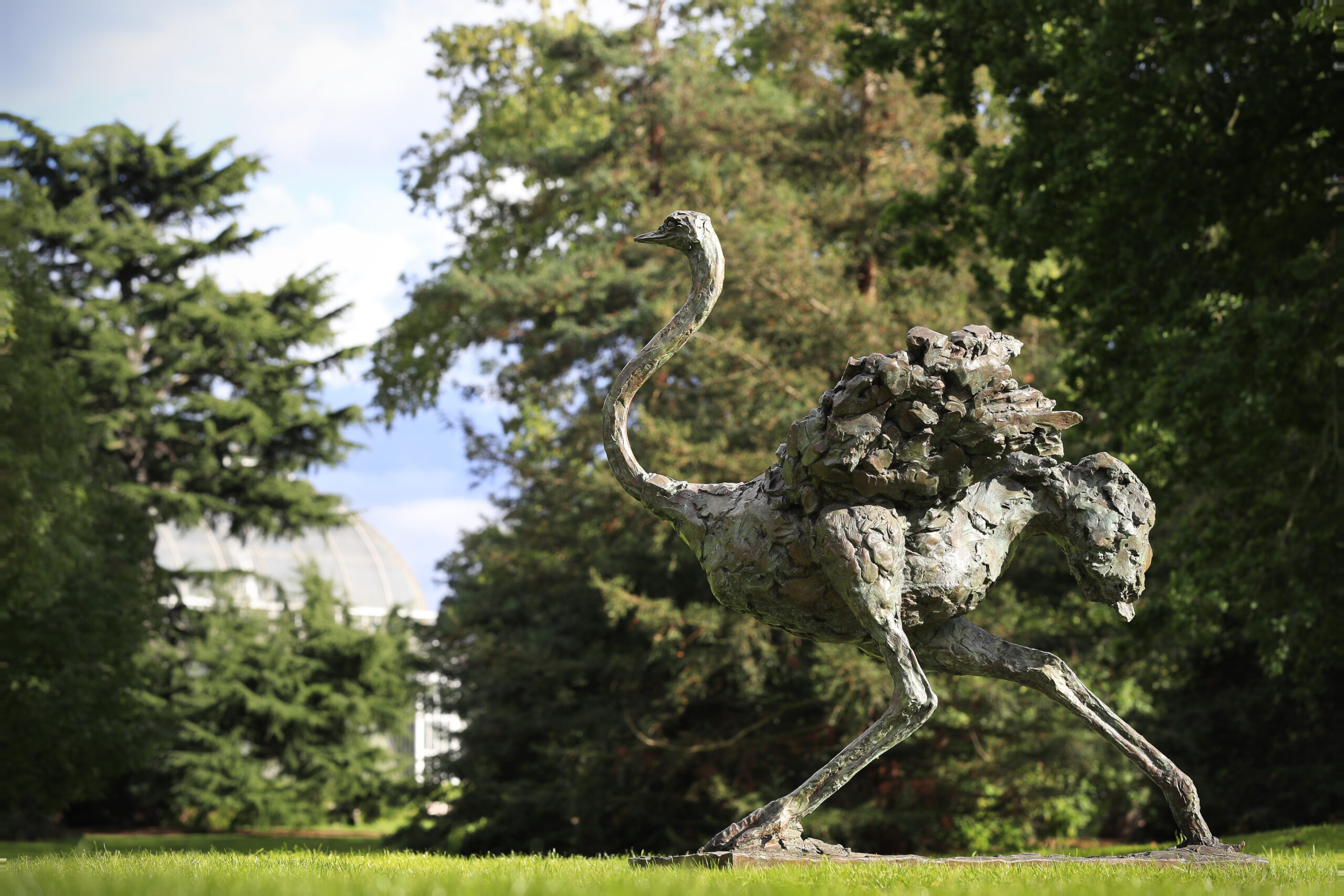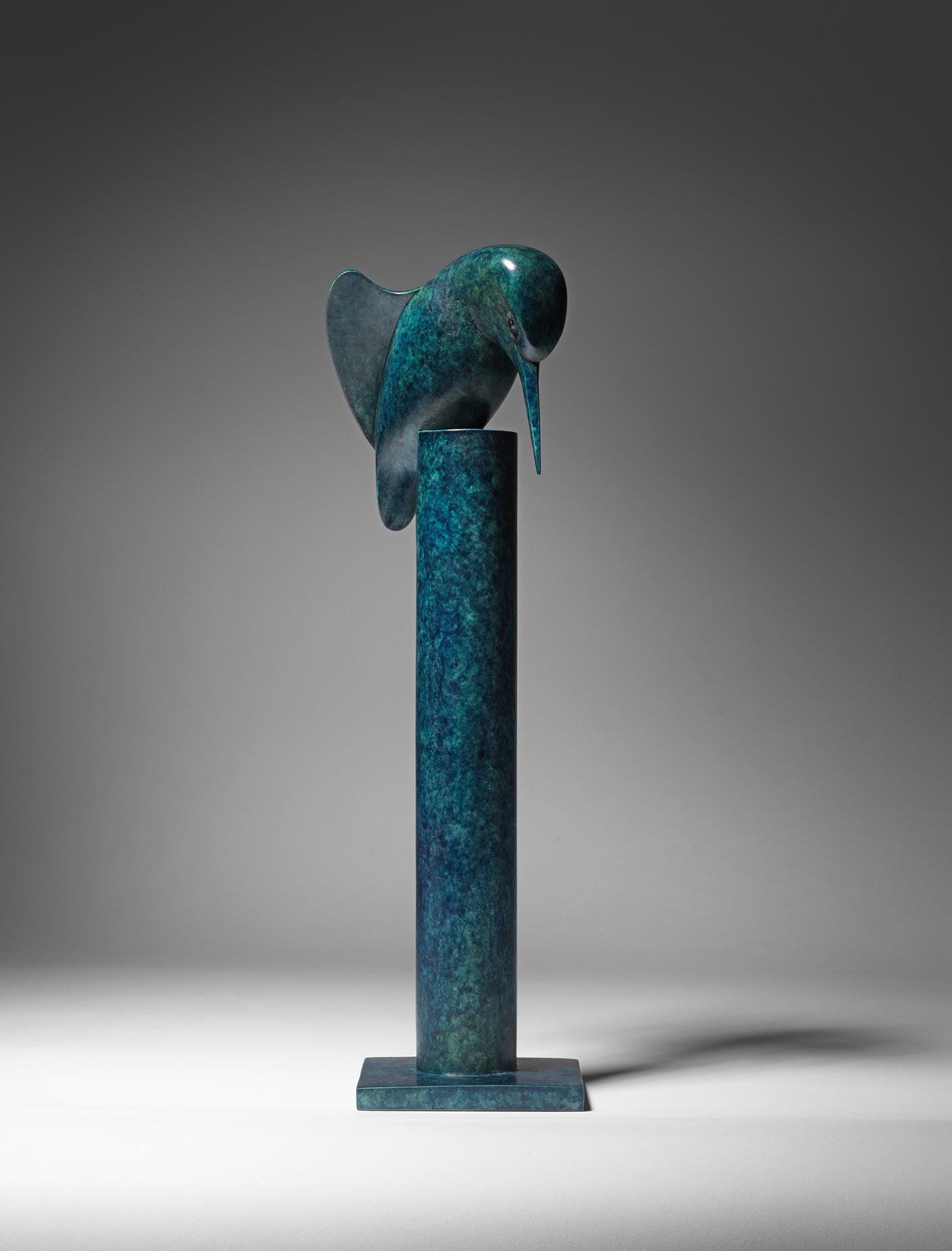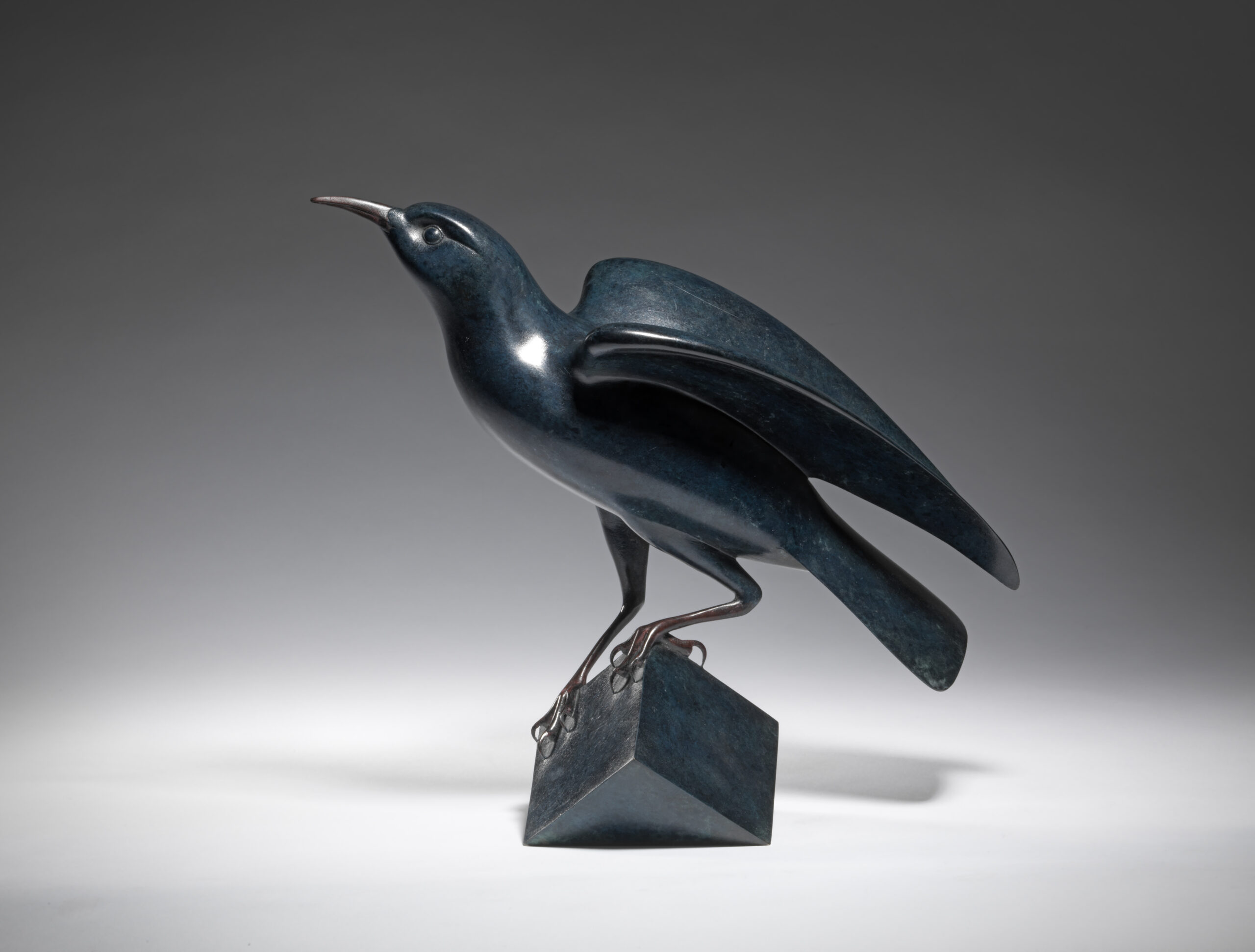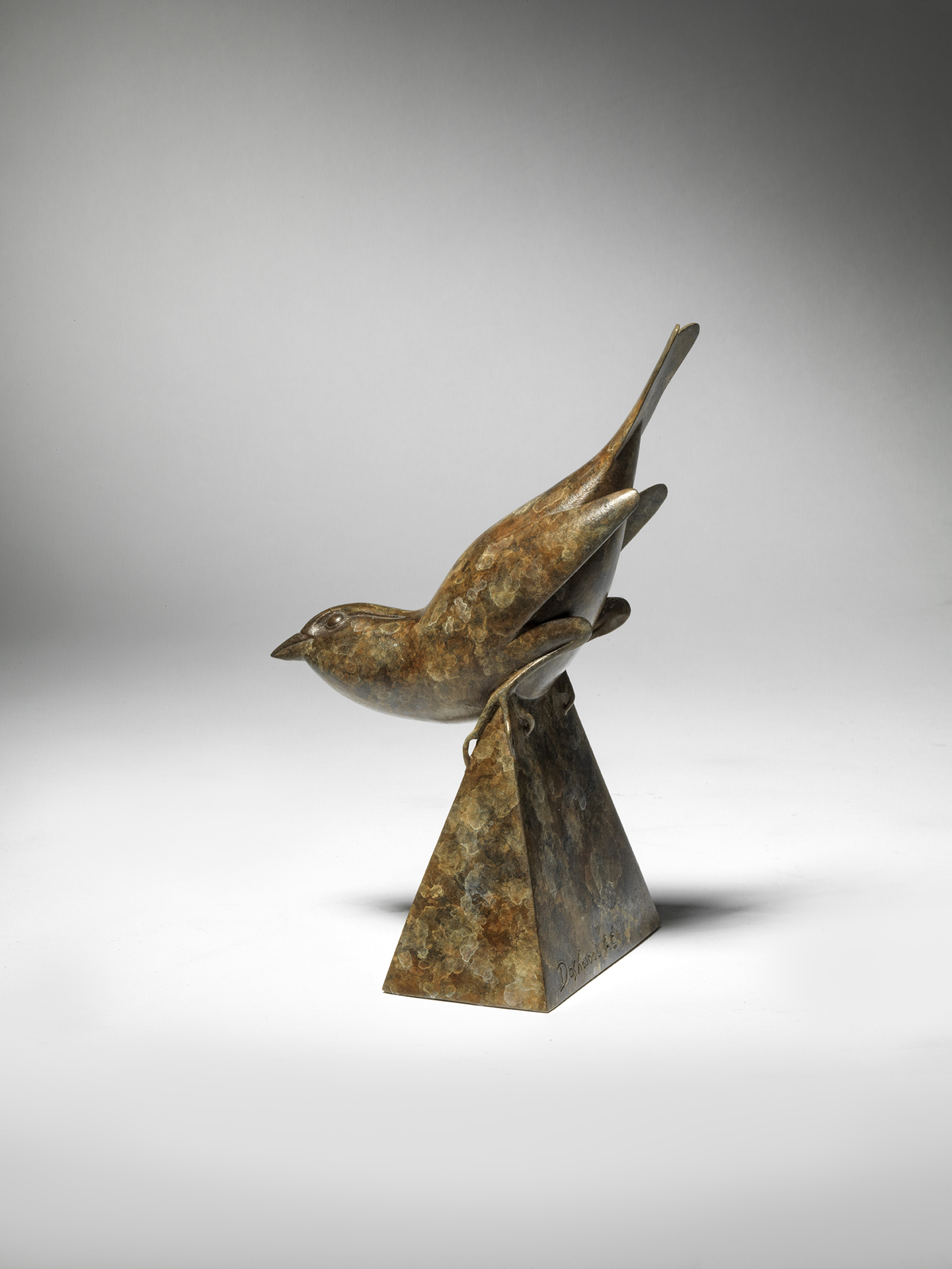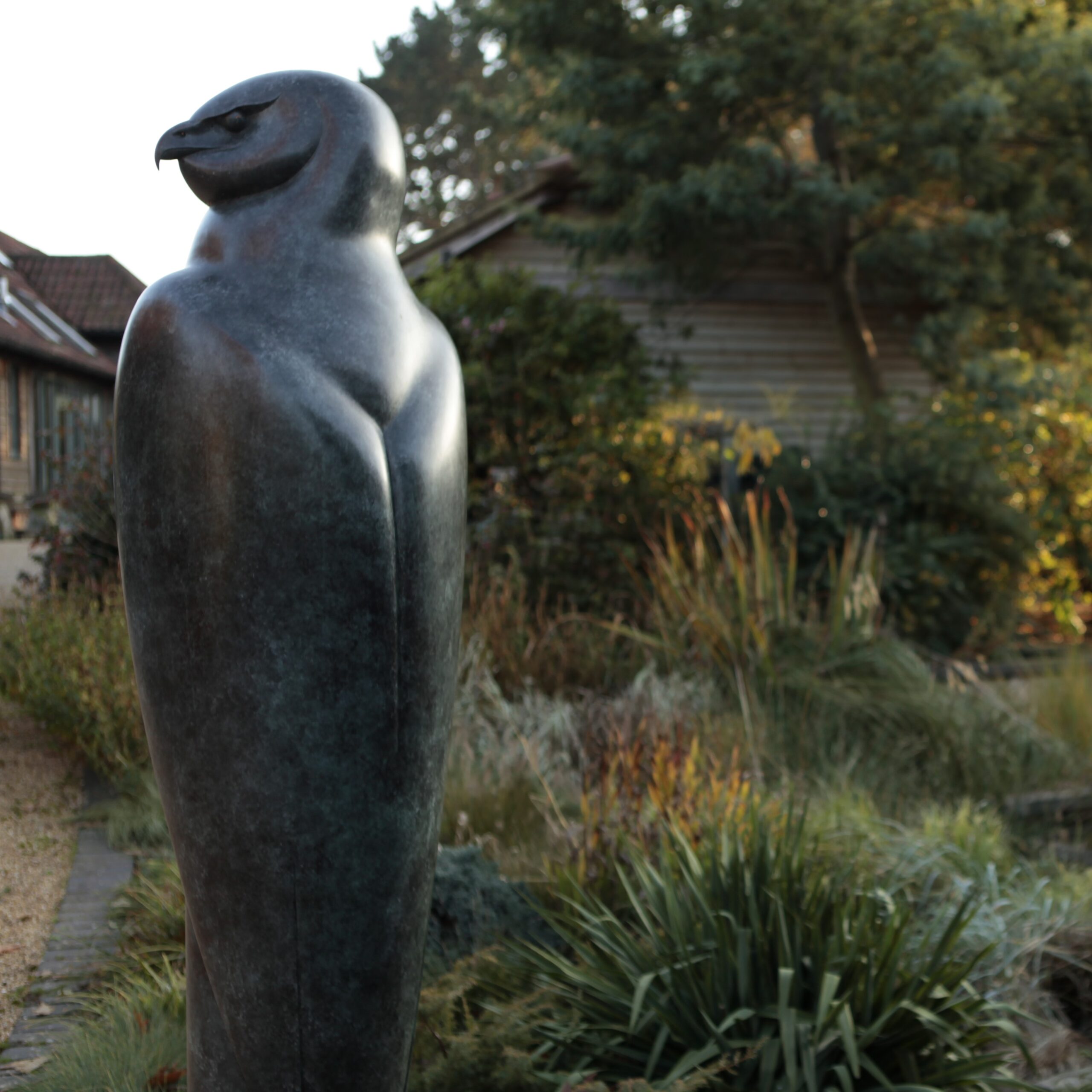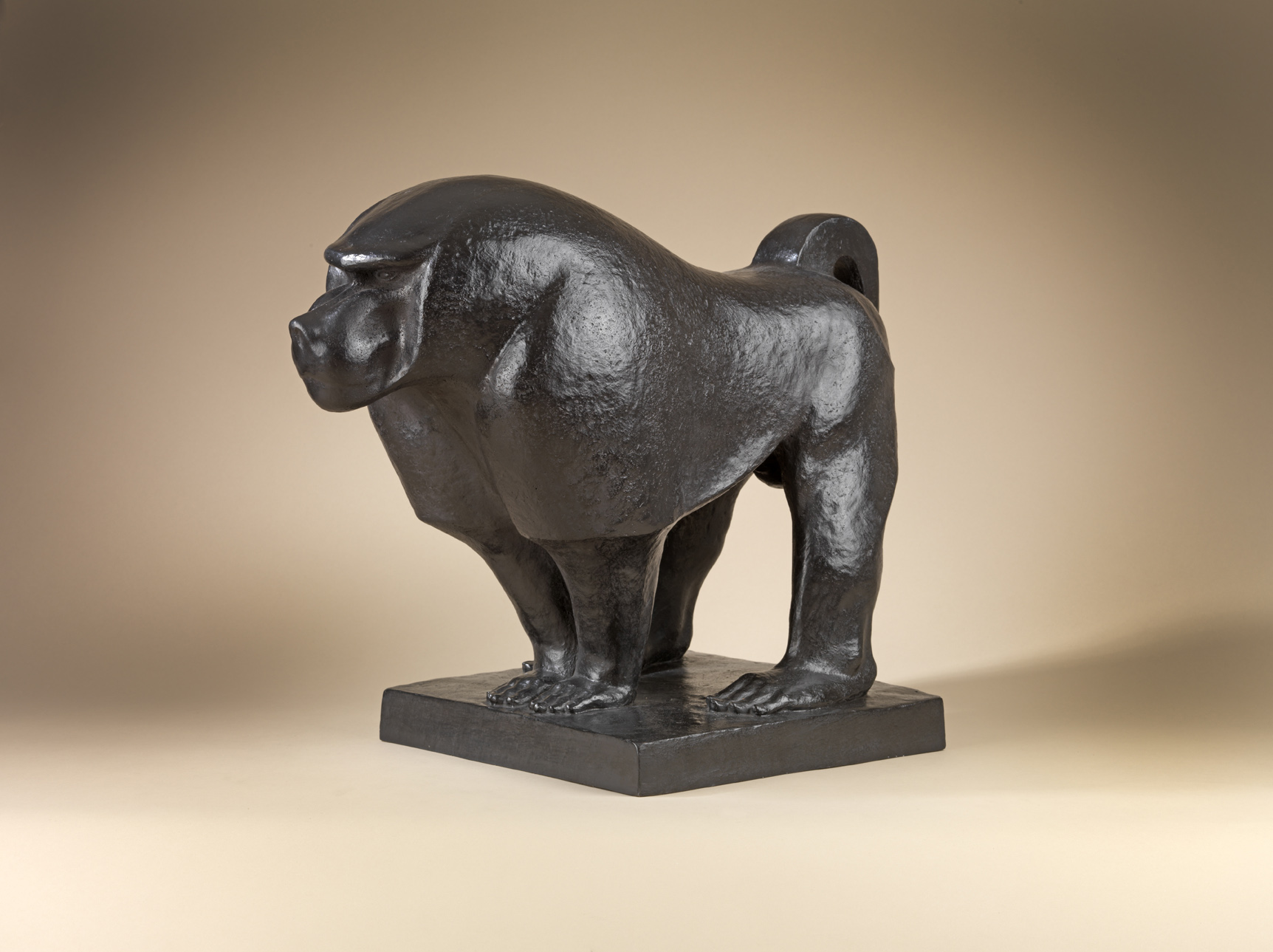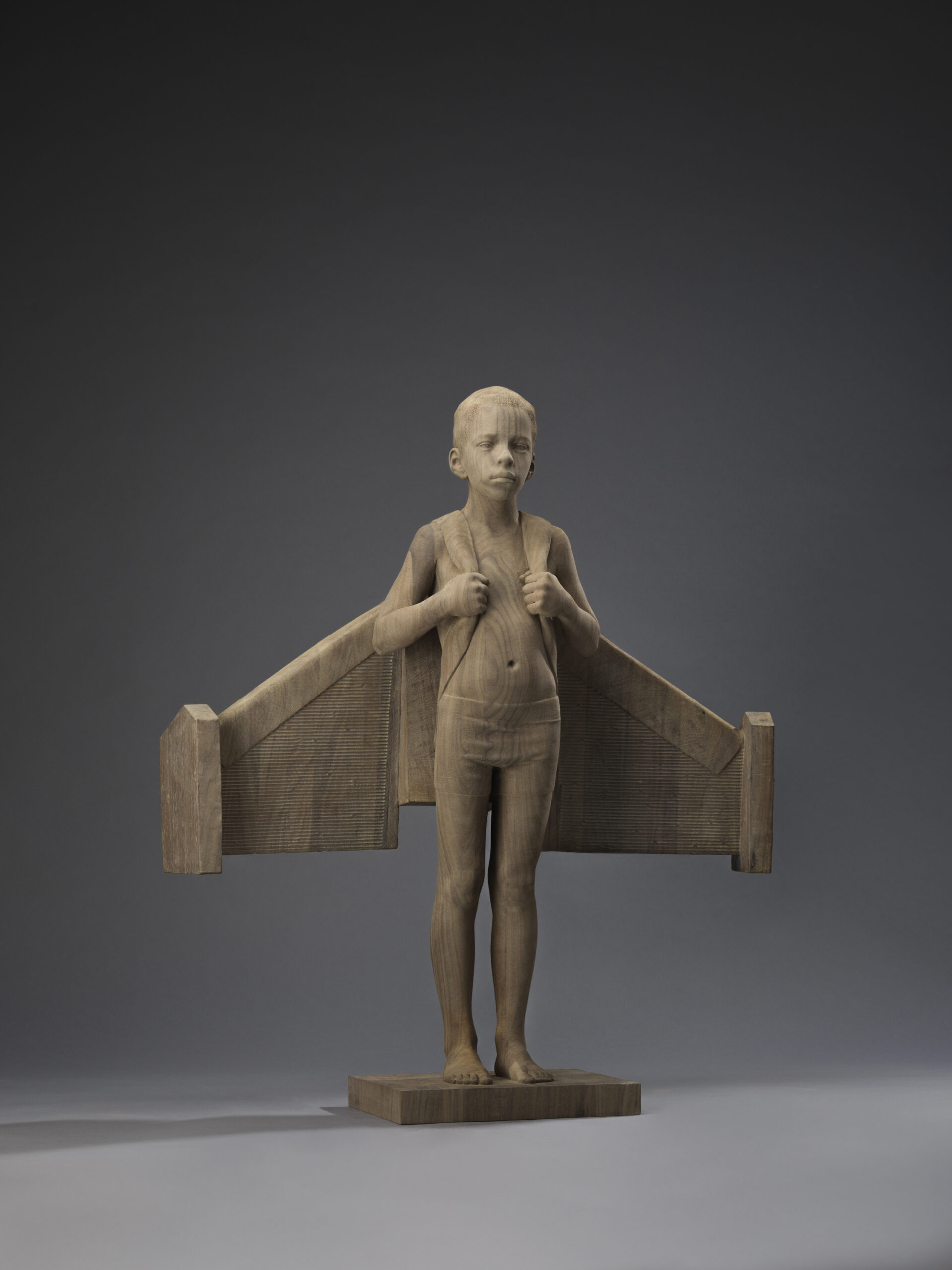Treasure House Art Fair
The Treasure House Fair will continue the decade long tradition of an annual show of the exceptional at the Royal Hospital Chelsea.
This new multidisciplinary event will bring together the world’s leading art and antique dealers specialising from antiquity to the 21st century. We look forward to welcoming you to our stand, no. 300


Artist Spotlight
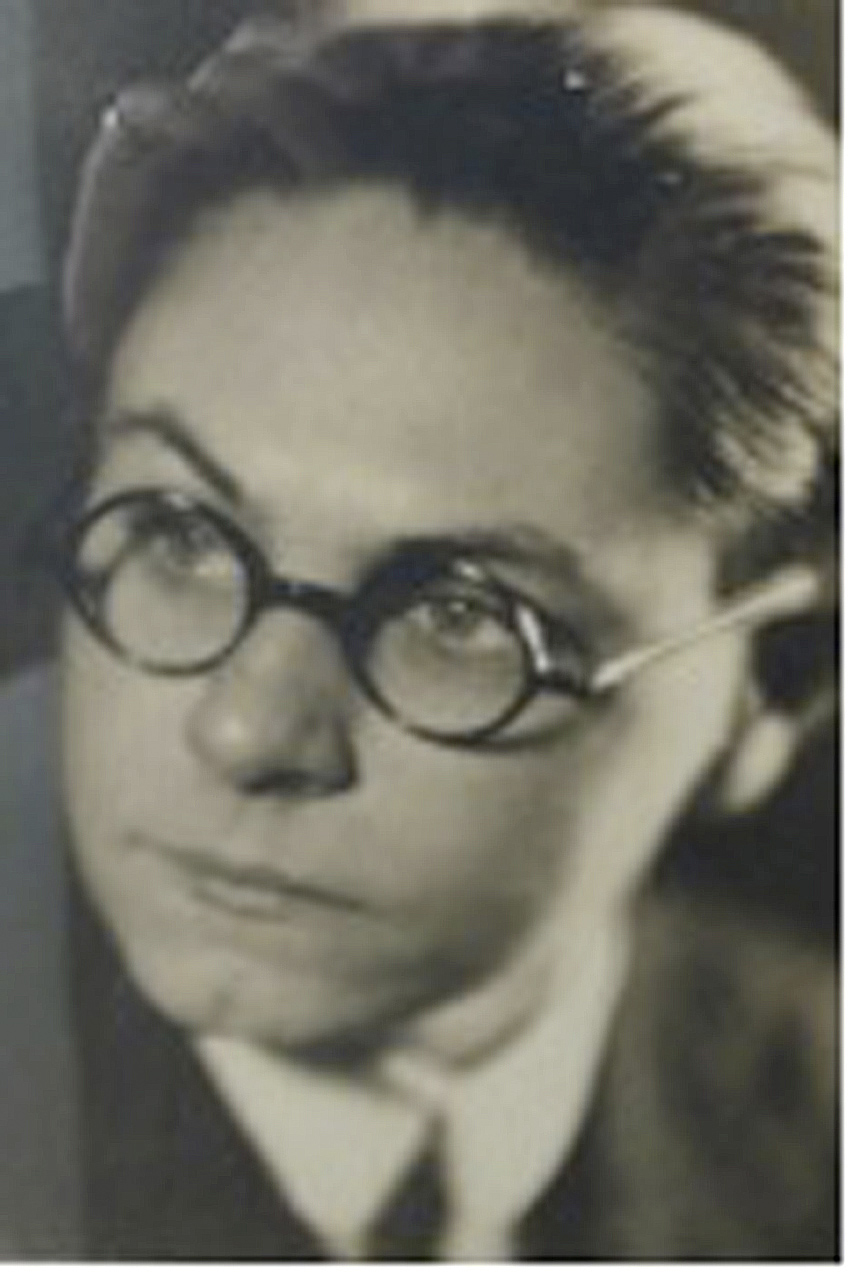
Charles-Joseph Artus
French, 1897–1978
Artus’s favourite subjects, executed in a simplified but sensitive style, were small domestic animals, household pets and particularly birds, whose smooth forms he was especially adept at capturing.
He carved some pieces in stone, but his preference was for bronze editions of his works, cast using the lost wax process principally by Valsuani and occasionally by Alexis Rudier and Bisceglia.
The work of Artus has until recently been less well known outside of his native France. Stylistically, his sculpture is at first glance similar in style to that of Pompon and Petersen with its smooth, simplified forms. However, whereas they were inspired towards achieving a purity of form and volume, Artus is driven by a desire to enhance the attitude of the subject, with the removal of all superfluous detail. In this way, he has a unique place amongst the Animaliers of the first half of the twentieth century and as his work becomes known to a wider audience, its quality is justifiably appreciated.
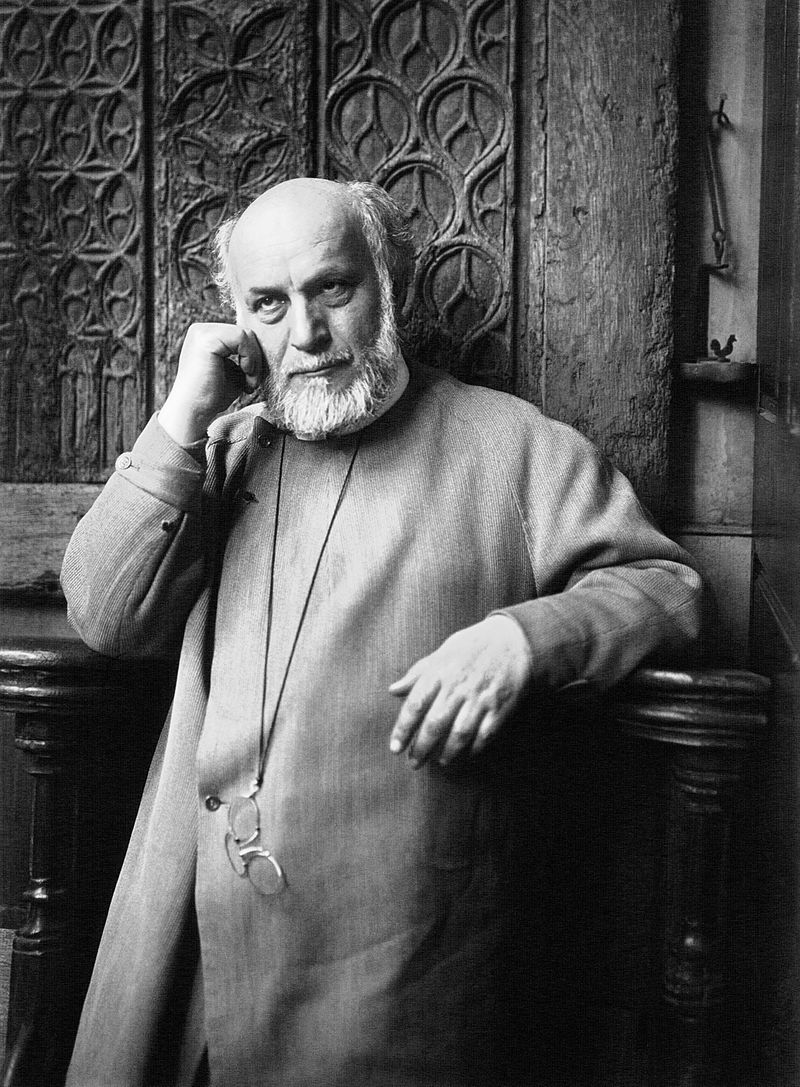
Emile-Antoine Bourdelle
French, 1861 – 1929
The secret of art is love. Art brings out the grand lines of nature. Emile Antoine Bourdelle
The essence of Bourdelle’s work was romantic in subject and monumental in form and took its subject from both classical and medieval sources. He was keen to see sculpture return to its traditional outdoor and architectural settings, whilst retaining emotion and strength in the modelling.
At the turn of the century, he worked as an assistant to Rodin, however he was an accomplished himself, with a developed and independent style. After Rodin’s death in 1917. The rough surfaces of his works are perhaps influenced by Rodin; however, his use of flat, simplified forms is looks to Romanesque art. Bourdelle was particularly interested in the relationship of sculpture to architecture and made a series of reliefs for the Théâtre des Champs-Elysées.
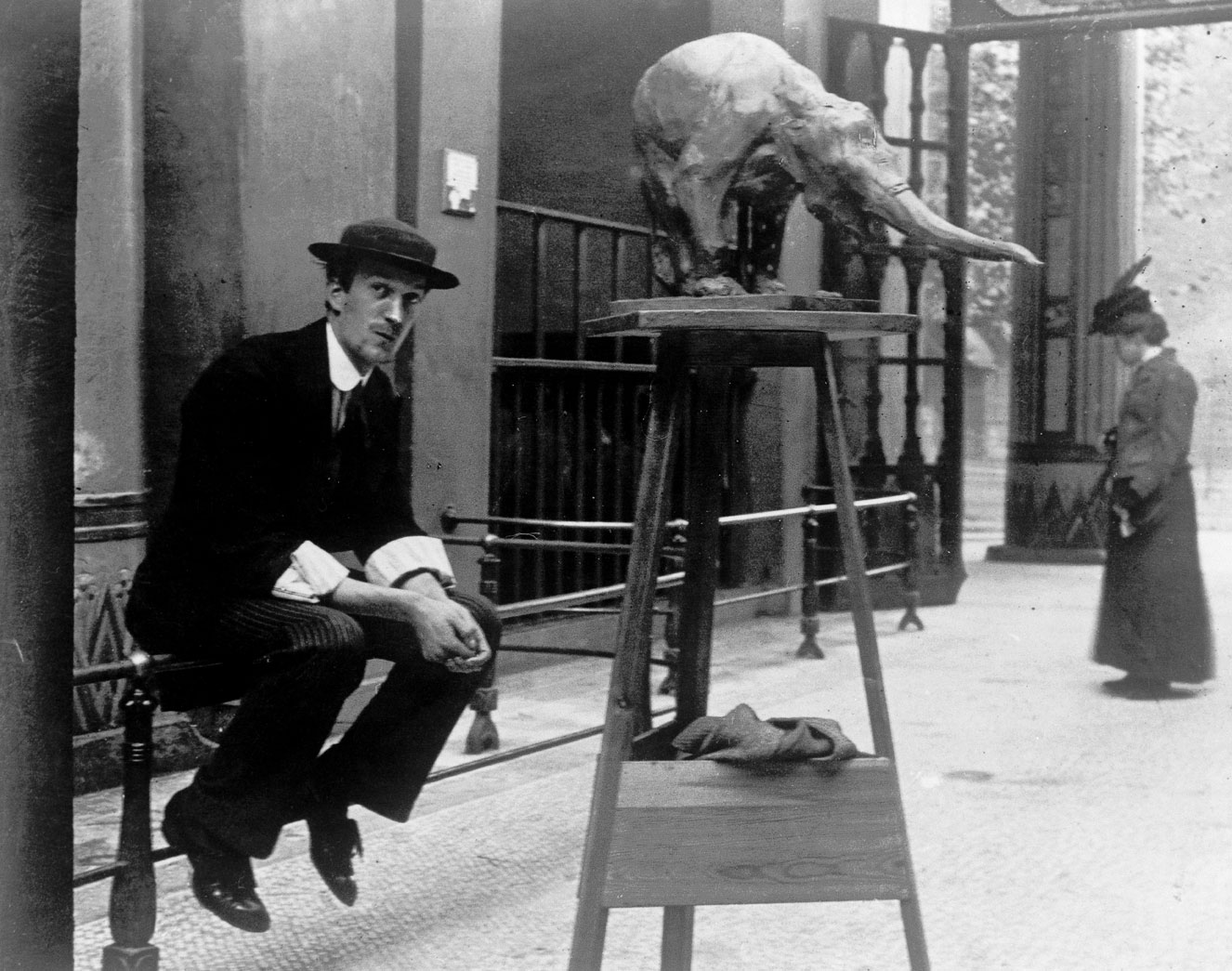
Rembrandt Bugatti
Italian, 1884-1916
Sladmore’s Modern department handles artworks from 1880, the birth of impressionism through Modernism and Abstraction to 1950. We hold specialist knowledge of the foundries and casting quality of this period. Spearheaded by Edward Horswell since 1985, this department has helped to co-ordinate major international museum shows, published award winning publications, and advises museums, public and private collections. We are collectors at heart, which makes us passionate about this period of sculpture.
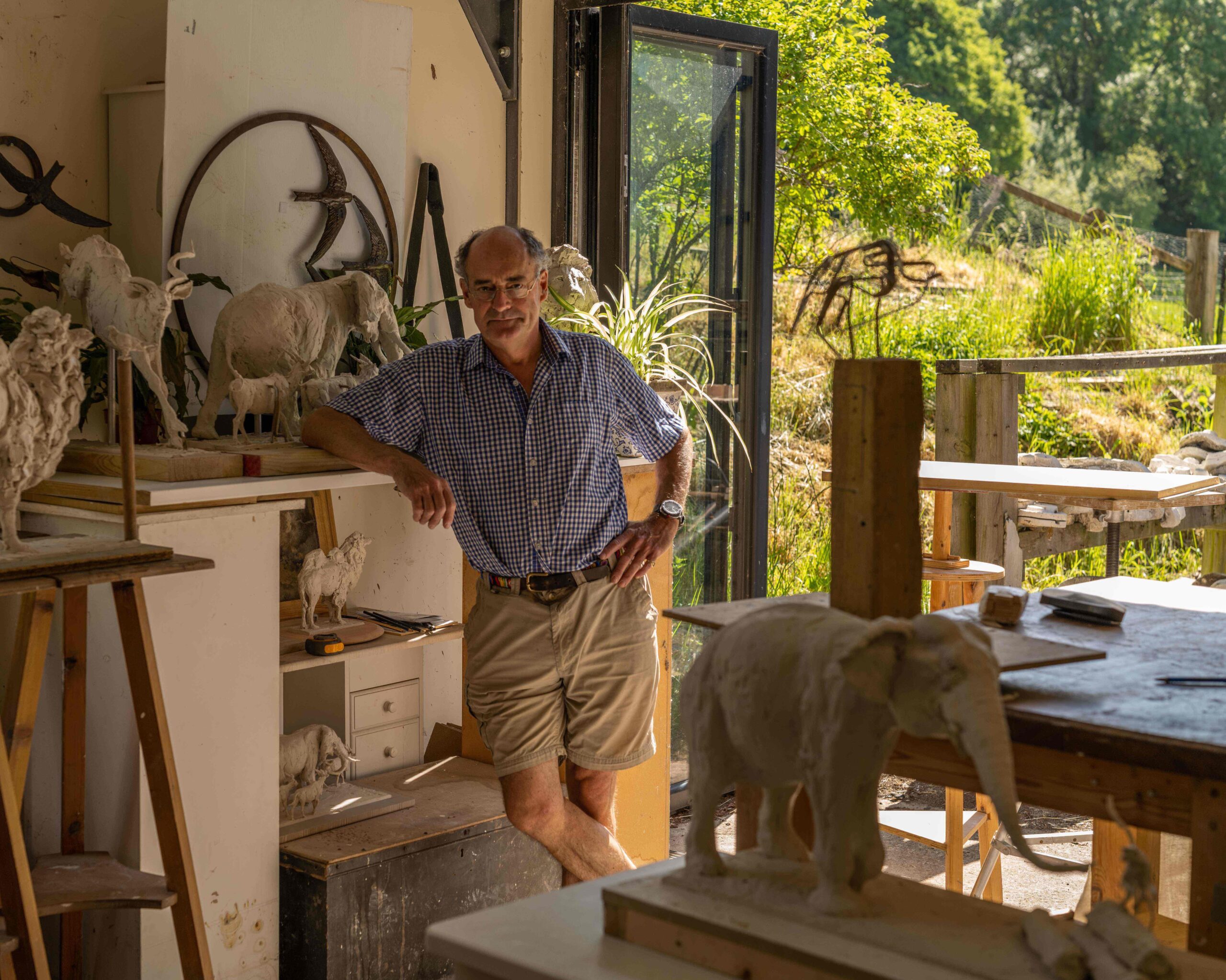
Mark Coreth
British, born 1958
Mark Coreth’s work reflects his instinctive understanding of the moods of the animals he sculpts. His success as a sculptor is borne of an acute and perceptive eye, coupled with the wealth of experience gained during his early years in Kenya and from his travels ever since to observe animals in their natural habitat. Mark’s working methods include modelling in clay direct from his subjects, live in the field; a practice which vividly translates into the fluid and impressionistic nature of his sculpture, capturing both the spirit of the animal but also that of their environment. His work ranges from small, intimate field-studies to life-size and monumental sculpture.
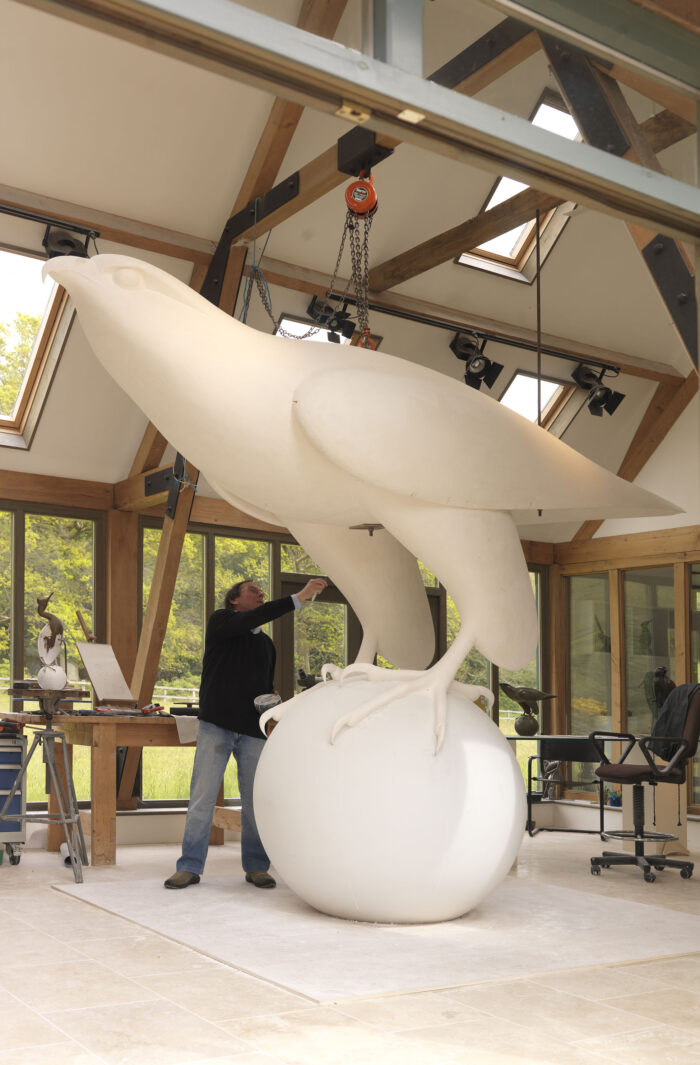
Geoffrey Dashwood
British, born 1947
A master sculptor of birds in bronze, Dashwood eliminates all superficial detail to attain refined forms with smooth surfaces, enhanced by the application of coloured and multi-coloured patinas. Although his work can be placed within the genre of wildlife art, Dashwood has transcended the subject matter and his bronzes are firmly established in the wider field of contemporary art.
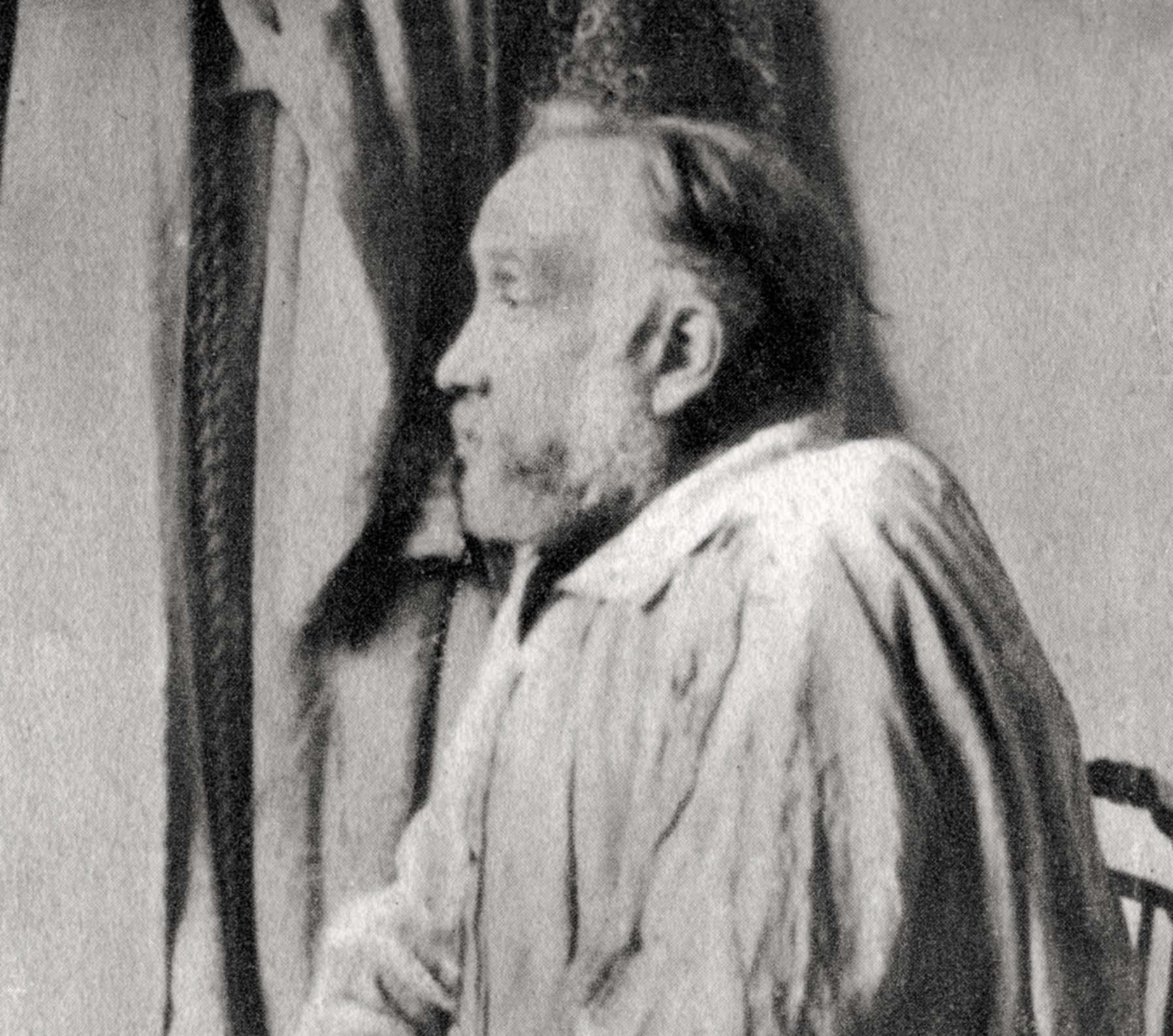
Edgar Degas
French, 1834 - 1917
Art is not what you see, but what you make others see.
Edgar Degas
Degas began fashioning wax sculptures from the second half of the 1860s: one of the first was a drinking horse. His fascination with ballet dancers and horses stems from the same central purpose in his art: to banish convention and encompass a far greater range of the elements of experience, including light and movement, than had hitherto been attempted.
Degas’ sculptural practice was little known during his lifetime and was largely private and exploratory but when his studio was discovered after his death in 1917, more than 150 sculptures, mostly in wax, were discovered. Many were badly deteriorated but 72, representing mostly dancers, horses, and women were cast by the renowned Hébrard Foundry in Paris. Degas used his sculptures as preliminary studies for his paintings, they were an integral part of his working practice.
His radical approach to sculpture was both innovative and an inspiration to all sculptors who modelled in plastilene, wax or clay. His sculptures were initially conceived as three-dimensional working drawings, preparatory sculptural notes for his two-dimensional works – in itself a novel approach. Degas’s close observation of his subject gives these horses a rare immediacy, yet they also stand alone as works of great beauty and complete sculptures in their own right.
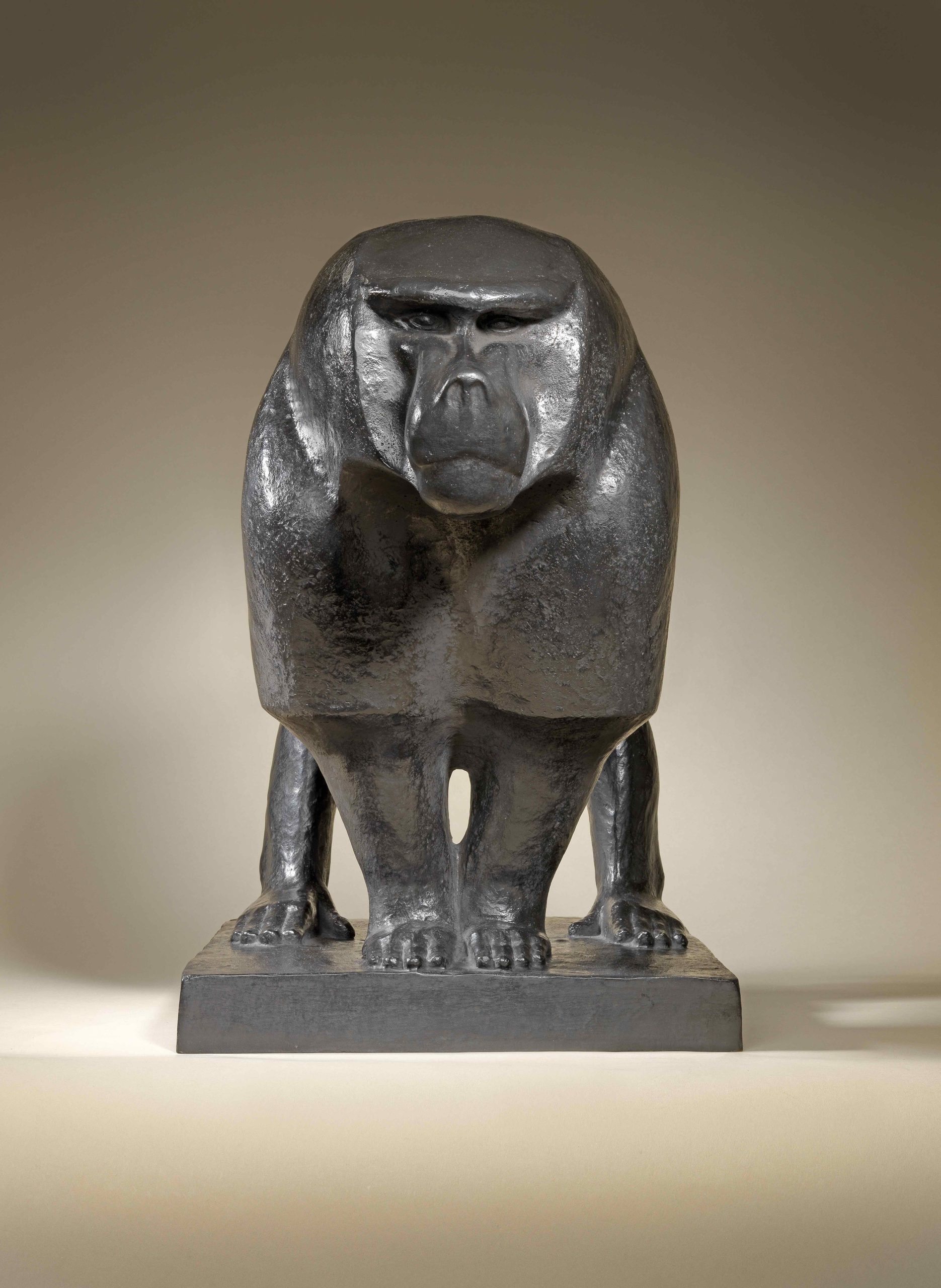
Charles Delhommeau
French, 1883-1970
Delhommeau’s models hold much in common with his contemporary Francois Pompon in terms of the simplicity of line and skill for depicting the character of the subject through the enhancement of the form.
Delhommeau observed the wild animals in the Jardin des Plantes and the Zoo at Vincennes. Influenced by Rembrandt Bugatti, he was concerned with capturing their flowing lines and vivacity as opposed to their ferocity. In the execution of his sculpture, he completed numerous preparatory drawings, watercolours and oils and therefore he has also acquired a reputation as an Animalier painter.
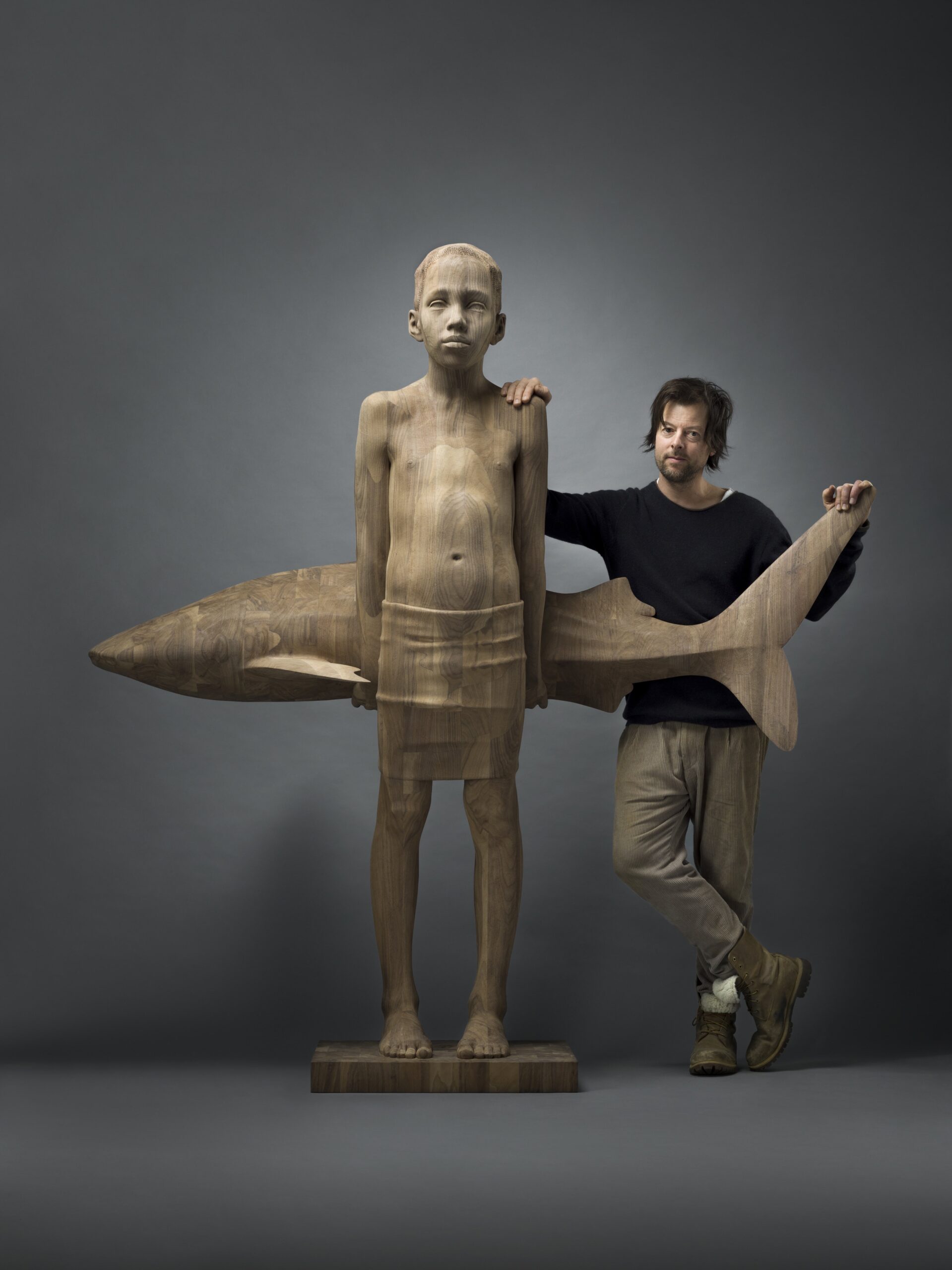
Mario Dilitz
Austrian, born 1973
Mario Dilitz is internationally renowned for his carved sculptures of the human figure. Dilitz does not set out a narrative to his work, preferring to leave the viewer to reflect on what they see in his sculptures. Dilitz lives and works in Axams, Austria where his carving studio is based. Dilitz’s wood sculptures are made distinct with the coloured glue he uses to painstakingly join the narrow blocks of wood. The final, delicate surface, with the individual characteristics of the wood grain is what transforms of every single sculpture, even in the case of series, into a remarkable and unique masterpiece. His wood figures are made in small series of unique pieces of each subject. He also produces work in bronze in close collaboration with a foundry in Italy.
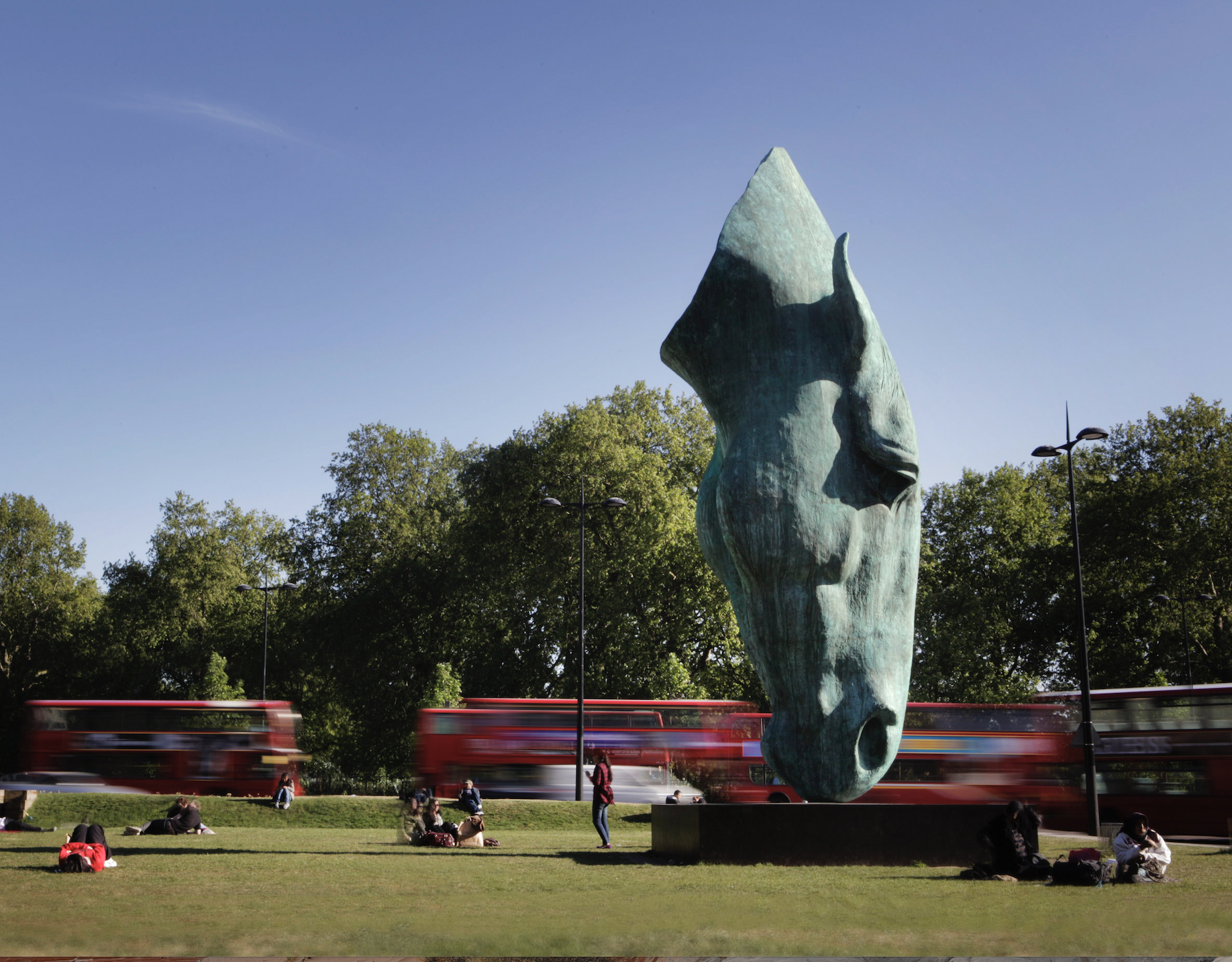
Nic Fiddian Green
Born 1963, British
Nic Fiddian Green has had many successful exhibitions both here and abroad in the many years the Sladmore has represented him, and whilst it is evident he still has an authentic affinity with the nineteenth and twentieth century masters also exhibited by the gallery – from Barye, Mene or Bonheur, to Bugatti, Degas and Frink, his growing international reputation testifies to the totally original and deeply involving nature of his work.
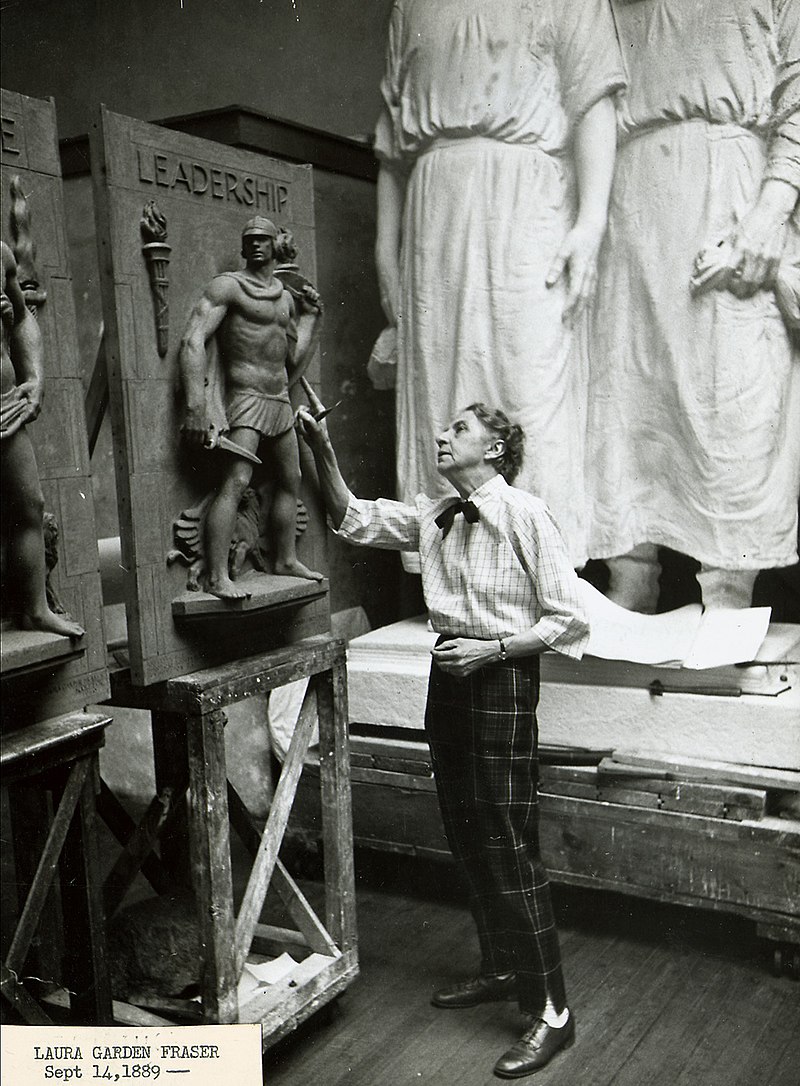
Laura Gardin Fraser
American, 1889 - 1966
Laura Gardin Fraser was one of the most prolific female sculptors of the early 20th century. Her output is lauded in both numismatic and artistic circles. Her work, from hand-sized to larger-than-life-sized, is the subject of numerous coins, medals, statues, and monuments. Jill Westeyn
Gardin Fraser’s career in sculpture began with creating medals, coins, fountains and animals for which she is well known. She was the first woman to design a coin for the US Treasury and was commissioned to do several monuments, including the double equestrian statue of Robert E Lee and Stonewall Jackson in Wyman Park, Baltimore, Maryland, the three relief panels at the entrance to the library at West Point Academy, and a white granite figure of Pegasus at Brook Green Gardens, South Carolina.
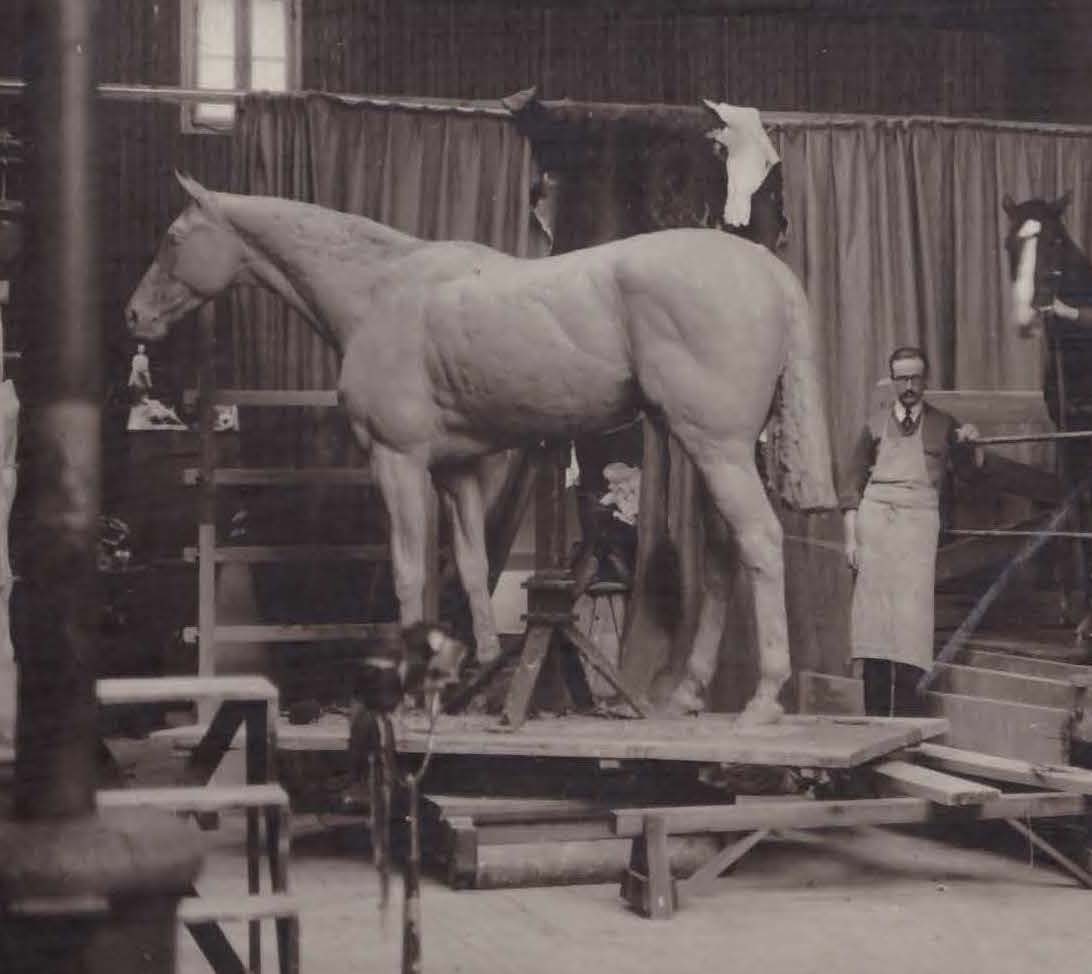
Herbert Haseltine
American, 1877 - 1962
Haseltine is one of the most important sculptors of this period. Whilst his work has largely remained within the milieu in which he effortlessly moved; it is equally well featured in many important museum collections.
In 1921 Herbert Haseltine conceived the idea of creating a series of sculpture depicting outstanding animals that had won agricultural prizes at British livestock shows. He commenced the Champion Animal series in his Paris studio, but the project was to take the American sculptor to Britain. For the next decade he was preoccupied, some say obsessed with this quest for perfection – the depiction of a harmonious synthesis of realism and idealism when sculpting these prize breeds.
Haseltine is one of the few examples of an artist who began as a modeller, but later became very much a carver. His early work has a spontaneity achieved only by rapidly modelling a malleable material, and it is on a par with the best exponents of this technique. With his change in working technique, his sculpture took on a more formal grandeur. He would first model the subject in plastilene, from which he would cast a plaster version. The durable yet workable texture of the plaster enabled him to refine the surface to produce the smooth, stylised forms that he sought, in much the same way as a stonemason hews his stone.
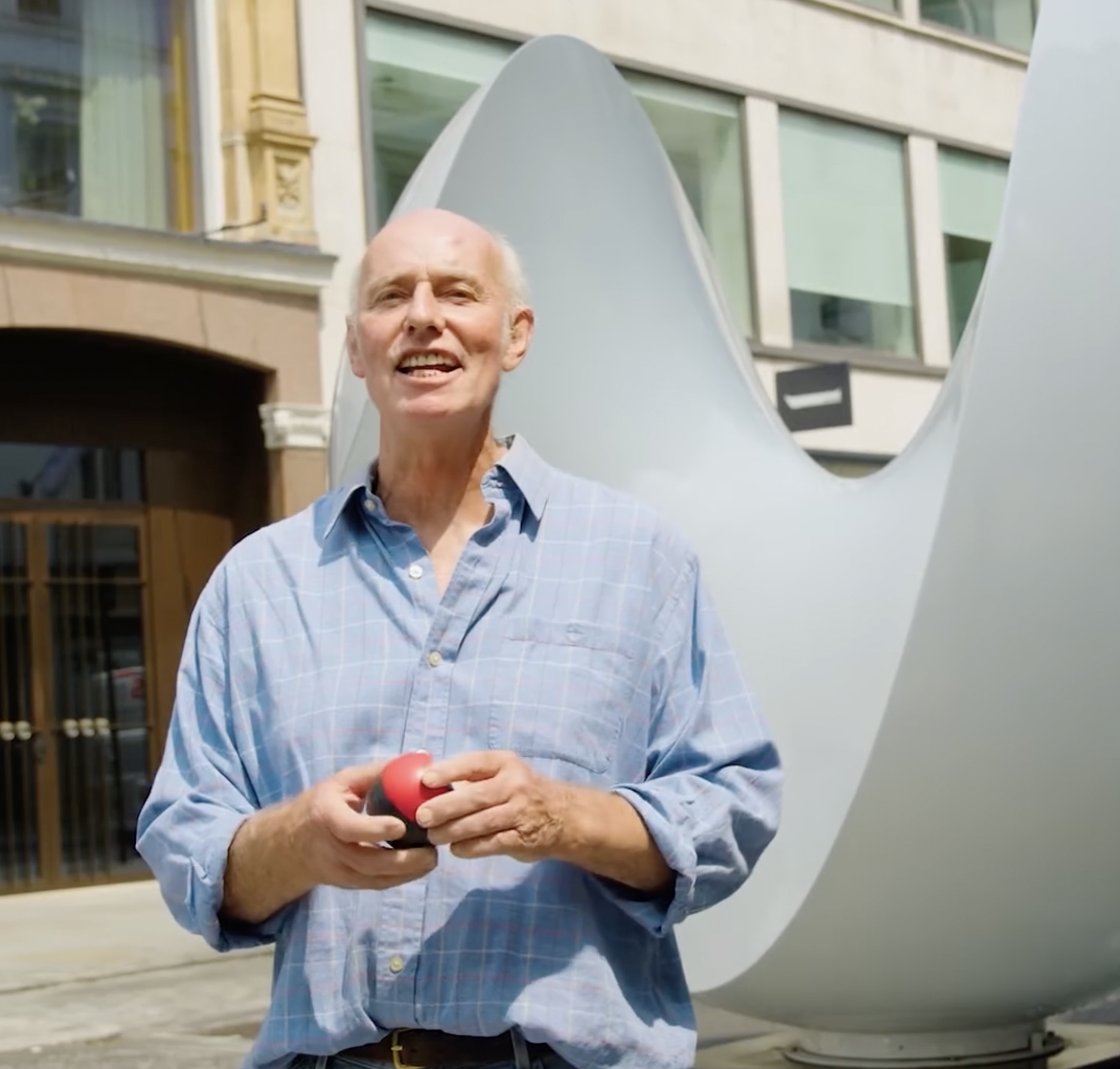
Johnny Hawkes
English, born 1955
Hawkes is a self-taught artist who has worked predominantly throughout his life with wood. A renowned modern furniture designer and maker, he has completed commissions for important private and corporate clients around the world. His abstract sculptures have been installed in public spaces including La Défense, Paris and in Covent Garden and New Bond Street, London. They are also held in many prestigious private collections.
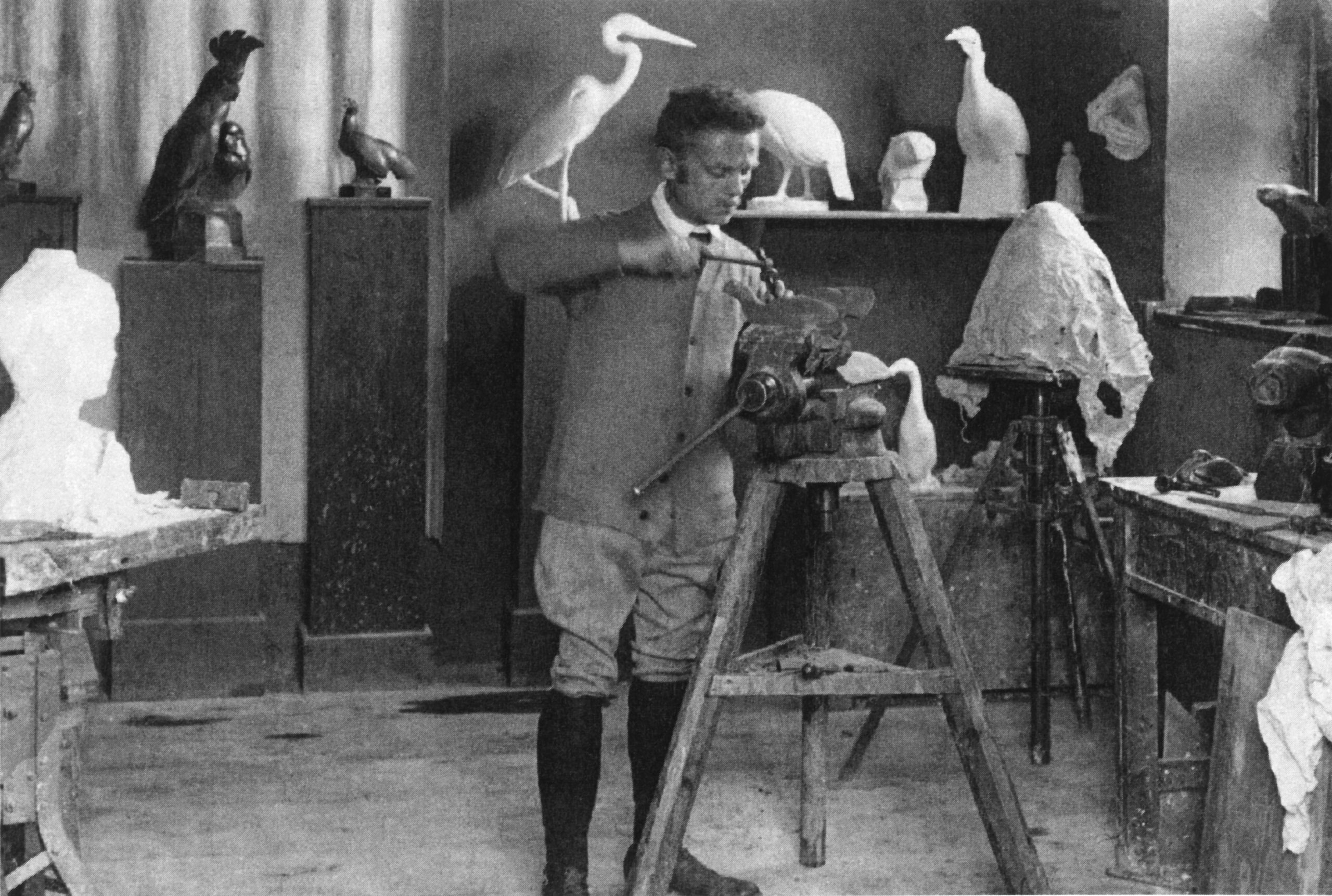
Wilhelm Krieger
German, 1877–1945
Wilhelm Krieger fits exquisitely into the circle of animal sculptors who are attracting a great deal of attention in today’s art market – sculptors such as August Gaul, François Pompon, Rembrandt Bugatti and Max Esser, to name just a few. Dr Martin Schmidt
Much has already been written about animal sculptor Wilhelm Krieger, who lived in Herrsching on the Ammersee for most of his life. Praise for his work generally centres on his close observation of the animals he chose to represent, and on their authentic reproduction true to the characteristics of the species. Attention is also drawn to the way in which he sculpted the animals without attitude of grandeur, thereby finding a degree of abstraction that gives the bronzes an utterly individual quality – a quality that hints at Art Nouveau and Art Deco, yet never loses its affinity to the animal.
A wonderful sculptor, Krieger produced a body of work, especially of birds, apparently independently of artists such as Pompon, Artus and Petersen, yet of
a high standard equal to theirs. His subjects are well captured in his more naturalistic works, and their characters are further enhanced in his more stylised models. His bronzes rarely have a foundry mark but are always of the highest quality.
EH
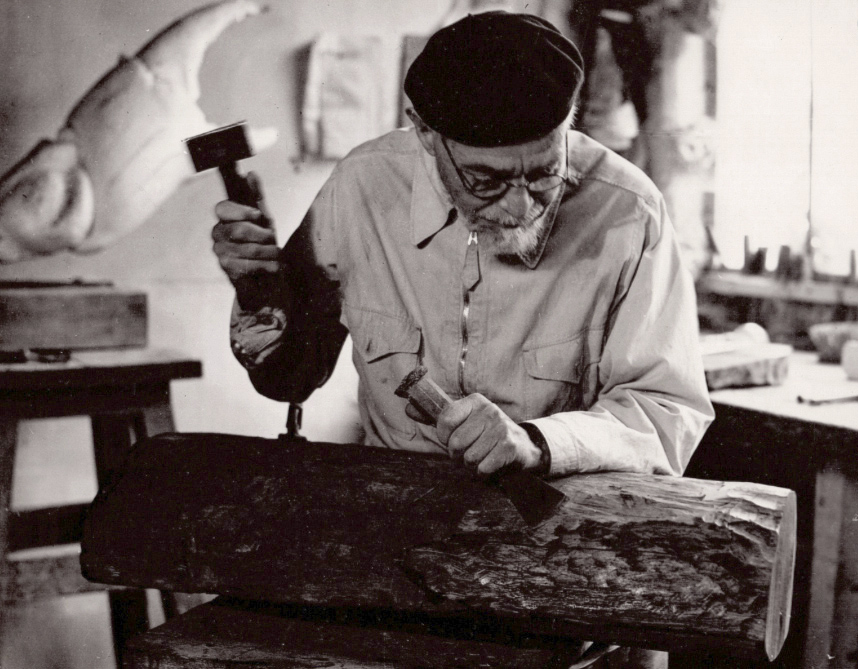
Gaston Le Bourgeois
French, 1885-1953
Despite being principally a decorative artist and carving most of his output in wood, the works that Le Bourgeois chose to cast into bronze are ideally
suited to that medium as well. Sometimes, as in the case of his ‘Head of a Panther’, the surface of the wood original is apparent in the bronze finish, but
this in no way detracts from its overall appeal.
Le Bourgeois decorated interiors for private clients and also public spaces. In the mid 1920s he also worked with the designer Emile-Jacques Ruhlman. In the 30s he was head of the sculpture atelier at the école de l’Union centrale des Arts décoratifs. In 1940, he was invited to appear at the prestigious Venice Biennale.
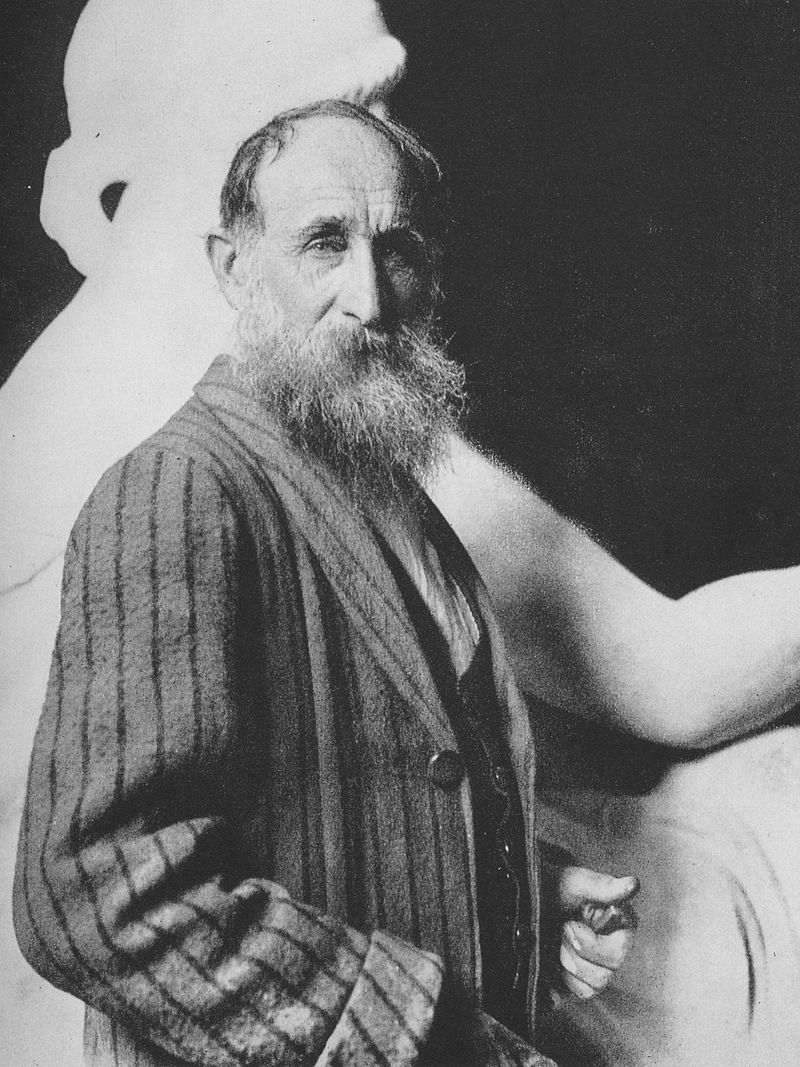
Aristide Maillol
French, 1861-1944
It’s not quite nature, it’s a statue. The feeling of greatness, I put it there. But it still makes work easier when nature gives you almost everything. Aristide Maillol.
After Rodin’s death Maillol was widely regarded as his greatest successor and his work exercised an enormous influence throughout Europe and the United States. Already an experienced artist by the time he began making sculptures, he swiftly arrived at a mature style. Nearly all his sculptures depict female nudes, simply standing, sitting, or kneeling.
Maillol modelled the human figure according to basic geometrical forms. He stated that ‘I always begin with a geometric shape such as a square, lozenge, or triangle, because these are the shapes which hold their own best in space.’ This underlying interest in geometry is one of the reasons that Maillol is considered the founding father of modern sculpture.
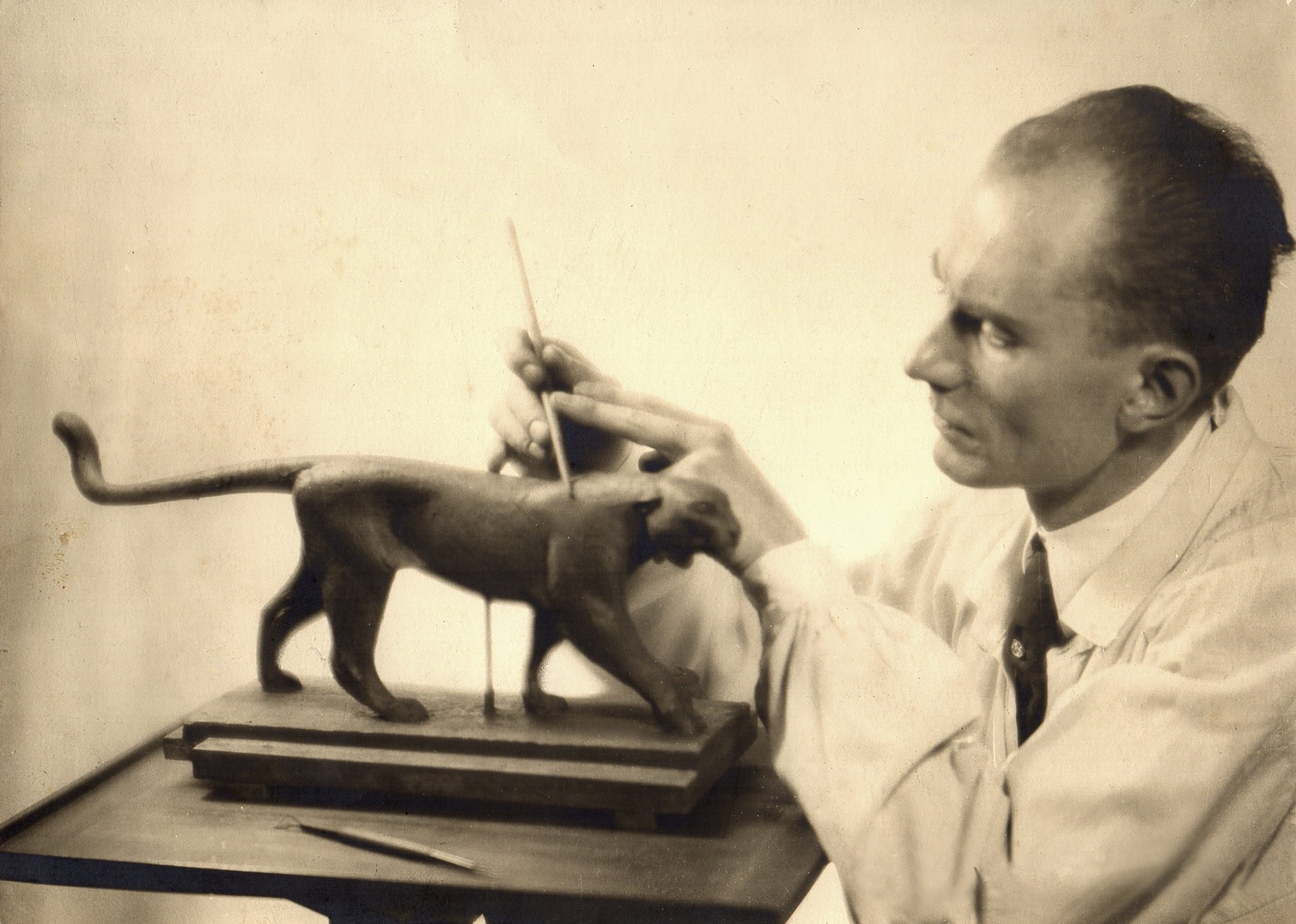
Armand Petersen
French, Swiss 1891-1969
The close observation of animals formed the mainstay of his sculptural work. He studied his subjects in depth, trying to uncover the most distinct behaviour traits of each animal.
Unlike his counterpart Francois Pompon, who stuck almost exclusively to birds, Petersen produced several mammals, whose character he brought to the fore with his refined modelling style.
In 1926 he joined a group of artists, led by François Pompon, who met regularly at the Jardin des Plantes to observe the animals. During this period, he was introduced to the dealer Edgar Brandt and participated at the first Animalier exhibition, which was held at the Galerie Brandt in 1927.
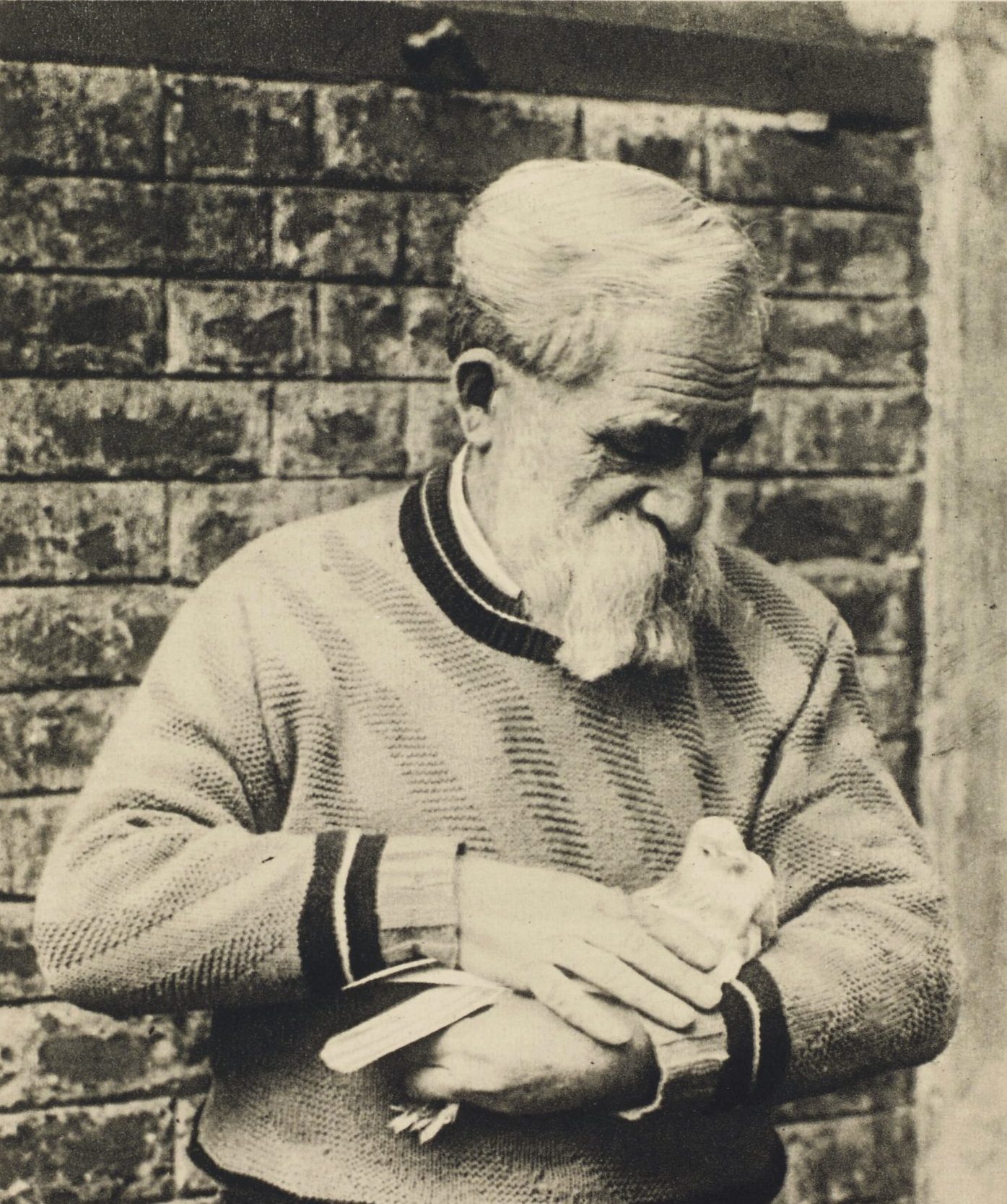
François Pompon
French, 1855-1933
‘You have to look at the animal from a distance. Close to you see all the unimportant detail. From a distance the subject takes on its real significance. The formal relationships become apparent. But you must still simplify, make sacrifices, and deform in order to gain expression.’ Francois Pompon
Pompon’s Polar Bear, begun in 1920 and reworked in different forms for almost fifteen years, cemented the artist’s reputation, becoming a classic of modern sculpture. A series of other signature pieces – panthers, doves, stags, bison and many others – issued from his hand, representing an extraordinary triumph over early adversity, and an increasing burgeoning of talent. Pompon resumed his study of domestic and farm animals also, and in 1931 he was instrumental in setting up ‘Les Douze’, an association of ‘Animaliers’. Other important members were Jouve, Poupelet and Guyot.
Pompon was among that generation who would shift the whole pattern of a career in sculpture away from official patronage and into the modern age of the art market.
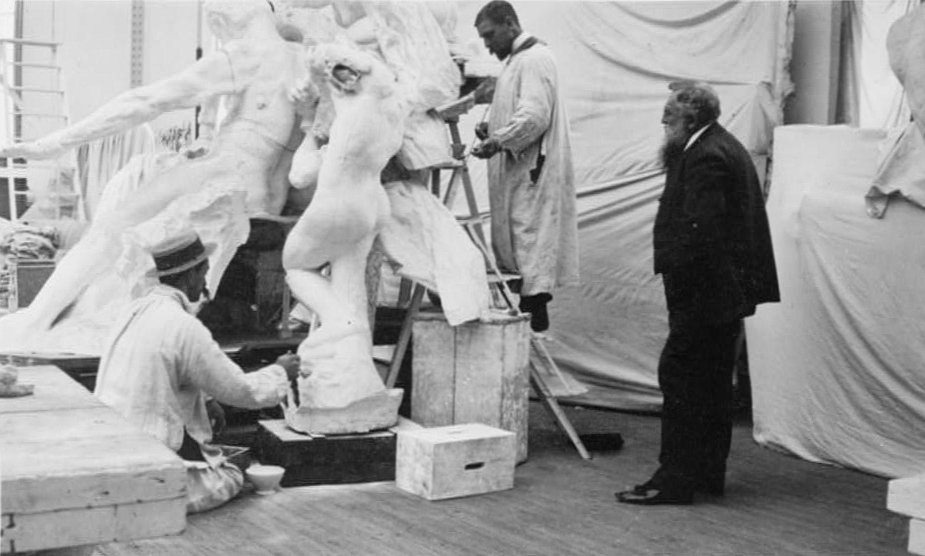
Auguste Rodin
French, 1840-1917
Art is contemplation. It is the pleasure of the mind which searches into nature, and which there divines the spirit of which nature herself is animated. Auguste Rodin
Bronze is a material well suited to Rodin’s sculptural style because it rendered all the subtleties of his modelling, as well as the vibrant movement of his compositions, without losing any of their lightness. This great talent for modelling, which characterised the work of Rodin during the 1880’s reached its peak with the 1890 Salon.
Later, he deliberately chose to simplify forms and planes, and perfected other techniques based on assembling existing fragments. This method enabled Rodin to build up, during the highly creative years devoted to ‘The Gates of Hell’ a vast repertoire consisting of several hundreds of figures and limbs of figures which he was to use in endless variations. Sir Gerald Kelly recorded “Small things, half life-size, and he never threw away a single one… They were arranged in shallow drawers… which had to be opened with great precaution so that they did not get stuck, and there were all these tiny hands, I loved to look at them. And he (Rodin) showed me the hands, and we picked one or two that were particularly good. I remember him holding a small hand in each of his and saying, ‘How good they are!’ with a big smile”.
More than any other sculptor, Rodin took full advantage of the possibility of modifying a work in one way or another.
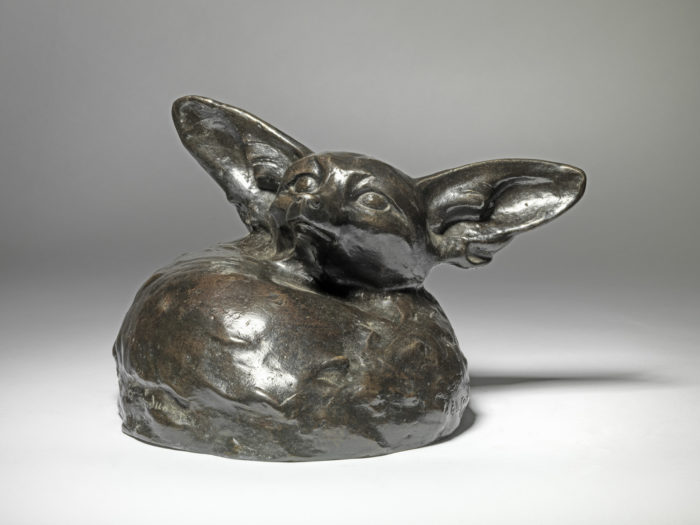
Edouard-Marcel Sandoz
Swiss, 1880-1971
‘On prend une pierre, on devine l’animal qui est dedans et l’on enleve ce qu’il y a de trop’. Edouard Marcel Sandoz
Sandoz produced an enormous yet unique body of work encompassing a wide range of animals, the bulk of them imbued with his brand of stylisation. For me, he is undoubtedly one of the leading twentieth century Animaliers, and his work epitomises the differences between the realism of his nineteenth century counterparts and the stylised modernism of his contemporaries.
Like his compatriot and contemporary Pompon, Sandoz worked in series, making variations on birds and other animals, often combining them with semi-ornamental elements such as bowls or dishes, suggesting a use as a birdbath, bird table or other garden feature. In his work, animals can become handles of paper knives, bases of candlesticks, bookends, or other semi-utilitarian objects
Sandoz himself had two pet monkeys, called Joseph and Madame Putiphaz, who lived with him in his studio in Paris. He sculpted over 80 models of monkeys both single and in groups.

Nichola Theakston
British, born 1967
Nichola Theakston’s work is inspired by animal form, and she aims to explore and understand elements of our shared consciousness. Primates are an obvious and compelling subject and portraiture is a vehicle often used to express feeling and emotion. There is a classical thread running through the work in the formal approach taken to the understanding of subject, combined with a looser and more expressive, painterly application of surface on the clay.She has exhibited widely across the country and is collected enthusiastically by many who appreciate her exceptional natural ability and skill, coupled with sensitivity and awareness of her subject.
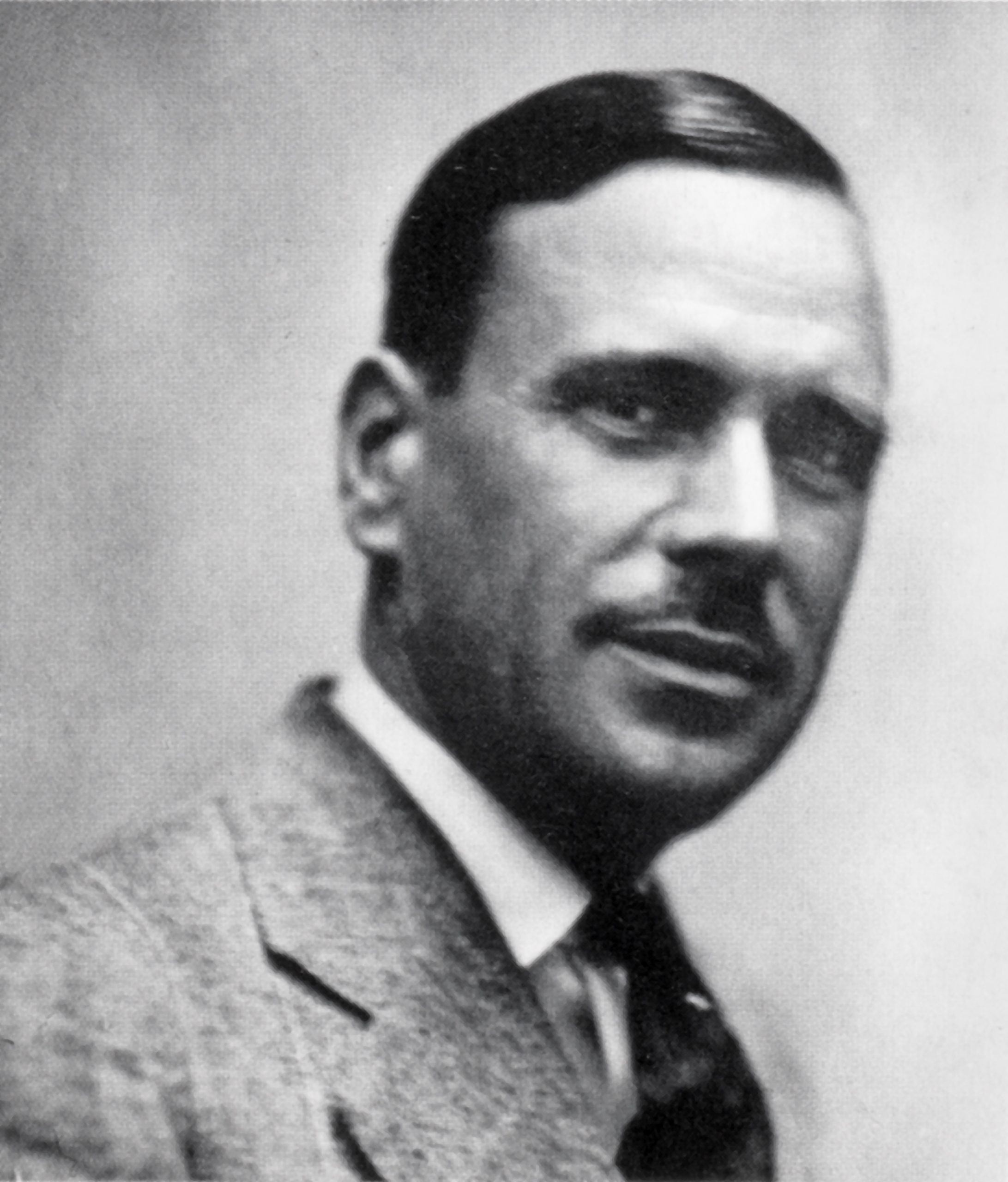
Sirio Tofanari
Acquainted with the life of animals in the wild from his early hunting expeditions, his fascination with the animal world grew as he advanced in maturity.
Stylistically the early sculpture of Sirio Tofanari is clearly comparable to that of the great early twentieth century master Rembrandt Bugatti. He shared Bugatti’s impressionistic approach and the translation of character and detail into sculpture. Later in life Tofanari witnessed the changing forms of the Art Nouveau Movement which swept the continent, and his later works reflect suggestions of its stylistic impact, hints of which we can also see in this work.
His sculptures illustrate his sensitive and perceptive observations of his subjects; feathered and bovine alike. Rarely has a sculptor ever brought to life so attractively the gentle affection and attachment between creatures which are so clear from this artist’s composition and form. The surface details in his work illustrate his vivid appreciation of the splendid diversity of the animal kingdom.

